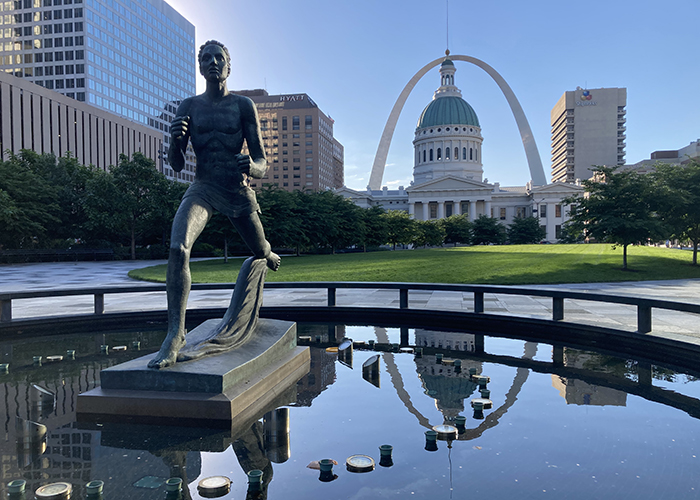 More 2021 Adventures |
St. Louis, MO → Ste. Genevieve, MO → St. Robert, MO 371.0 mi (597.1 km) |
 Next Day |
Let’s make the MO-st of today, everyone!
After driving up to Springfield yesterday, I treated myself to a stay in a National Registered hotel, the Missouri Athletic Club! Out of over 5,000 private clubs in the country, The MAC is one of only 150 elevated to the level of Platinum Club, and I firmly believe that when it’s your birthday, you may as well go big! Today, I’m going to do some major exploring, checking off two national park sites, plenty of neat history in downtown St. Louis and beyond! No point in lying around. Let’s get to it!
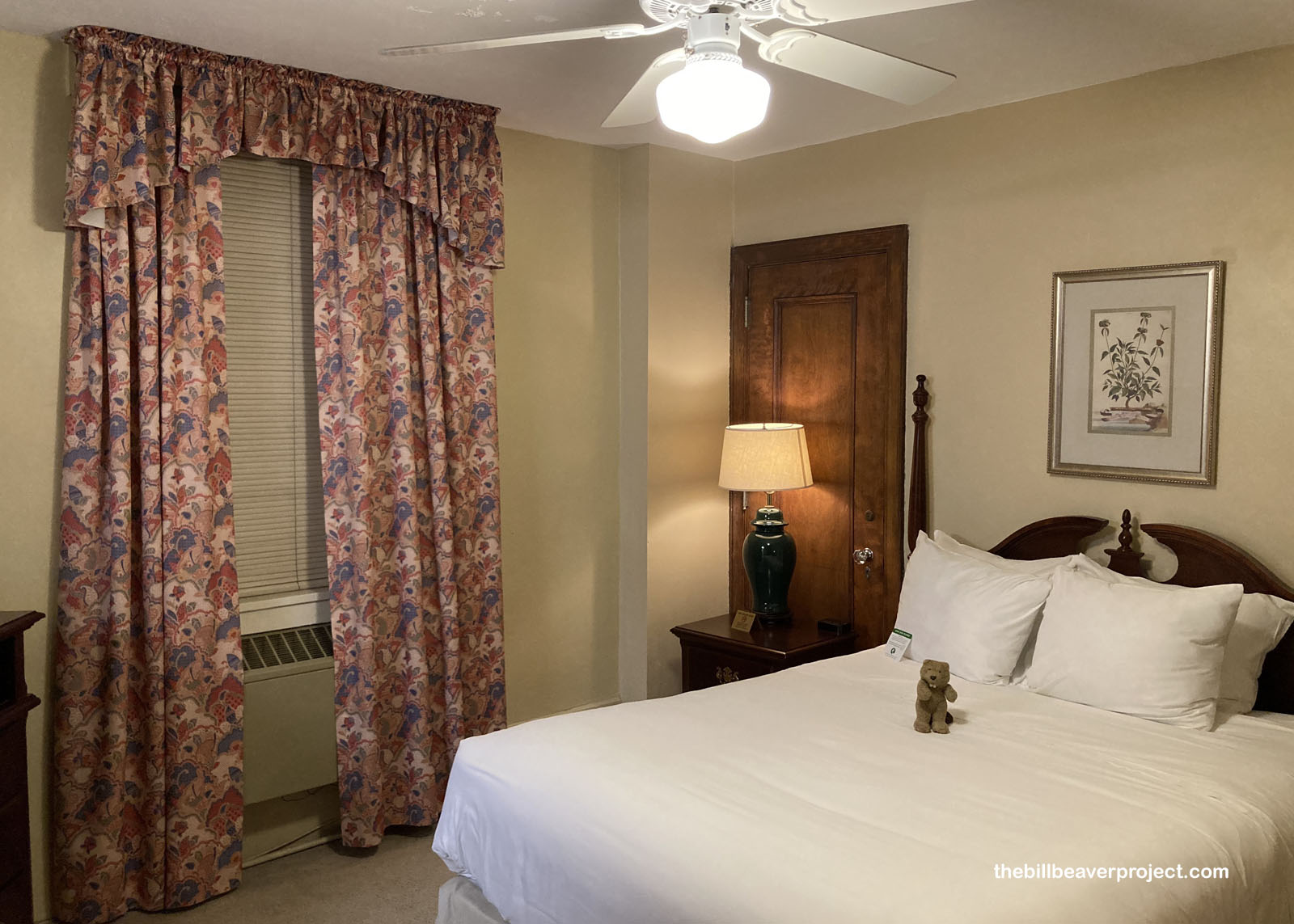 |
My first stop was just around the corner: Gateway Arch National Park! Formerly Jefferson National Expansion Memorial, this is the tiniest national park in the US, spanning only 192 acres compared to the next smallest, the 5,549-acre Hot Springs National Park! It was renamed on February 21, 2018 to make it more recognizable, though unlike the other national parks, it isn’t a natural preserve of any kind.
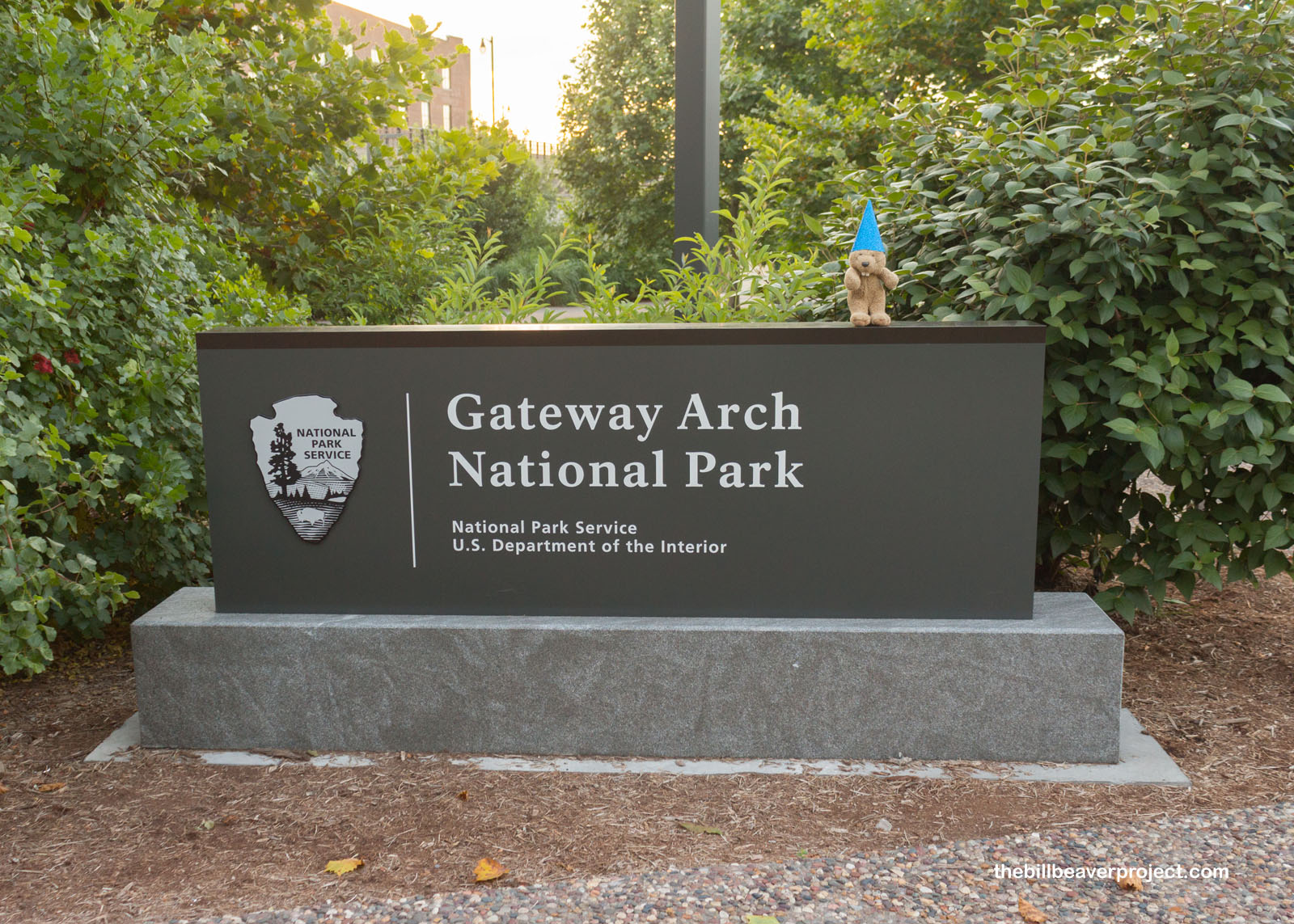 |
In fact, the centerpiece of this park is one recognizable structure: the Gateway Arch! It’s impossible to think of St. Louis without it, and it was unmissable as I strolled into the park this morning. At 630 feet in height, it towered high over the trees!
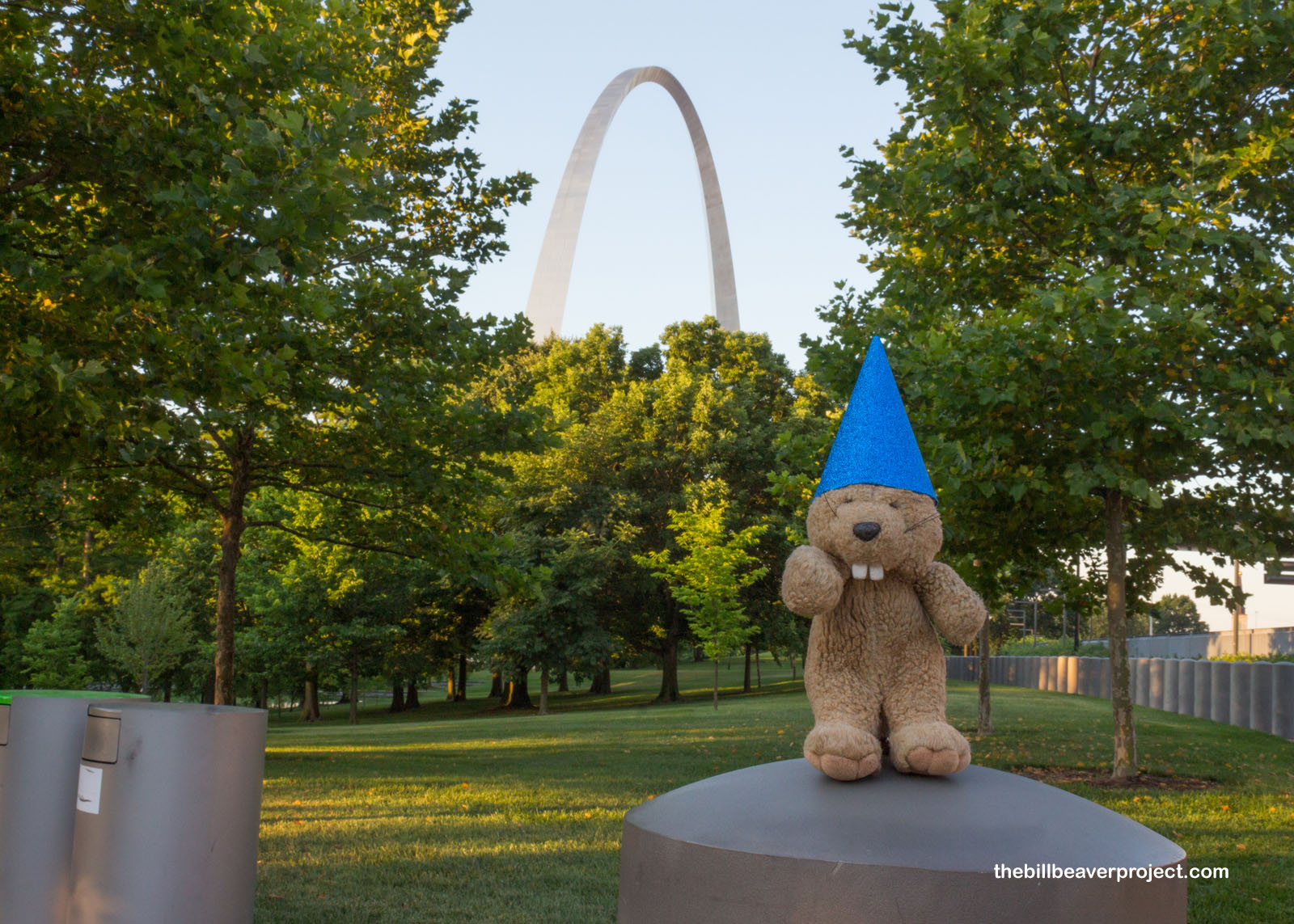 |
If I’d kept looking up, I’d probably have missed this sign, marking the site where Elijah Lovejoy printed his newspaper, the St. Louis Observer, from 1833 until 1835. As a Presbyterian minister, Mr. Lovejoy’s paper originally criticized Catholicism, but it quickly turned to criticizing slavery. These criticisms, of lynchings and the system at large, would lead pro-slavery forces to destroy his office and ultimately kill him. However, his paper inspired abolitionist-minded folks from John Brown to William Garrison to Abraham Lincoln!
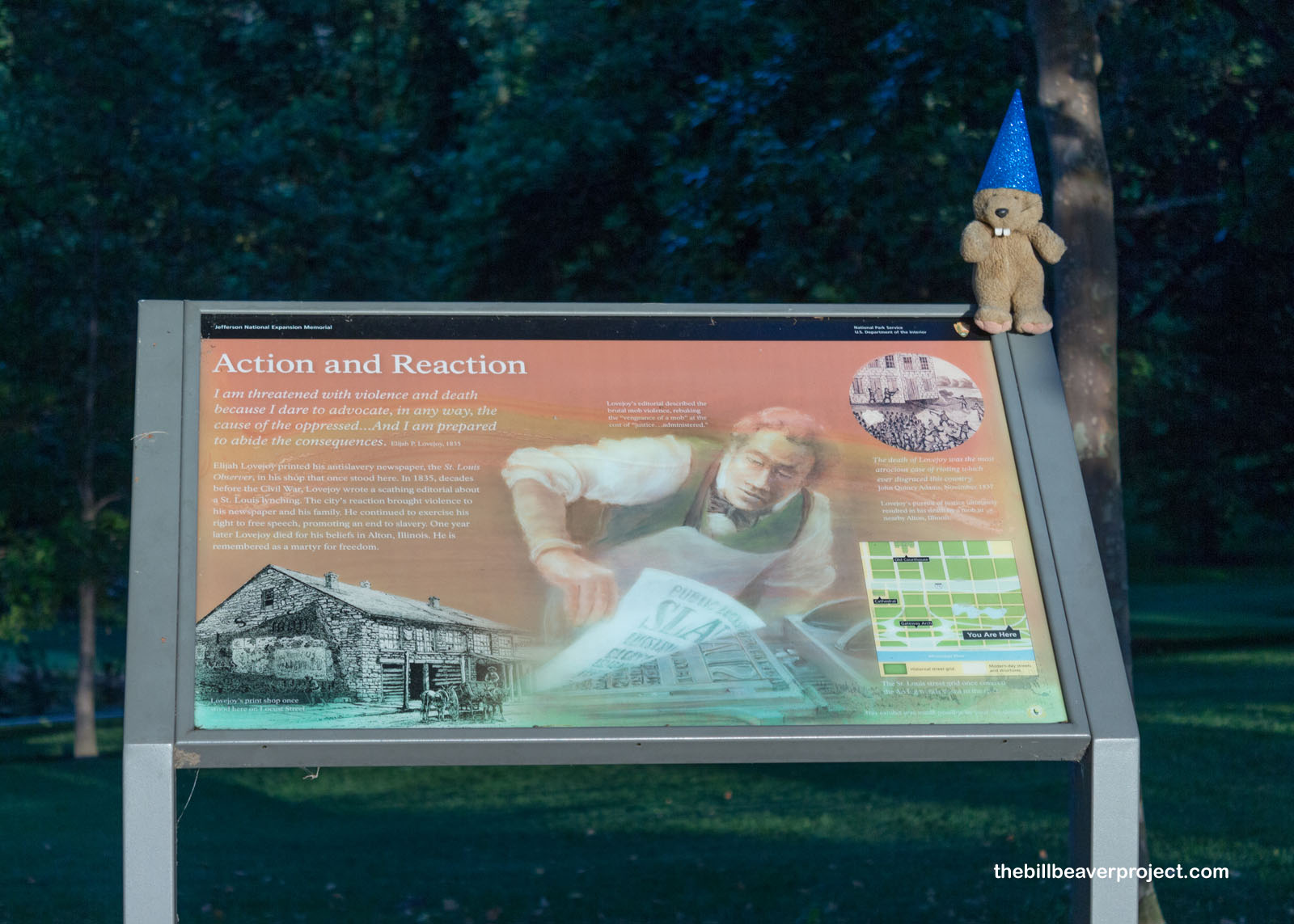 |
Today, all this violence has been thoroughly covered up by a stupendous silver structure! With land set aside by F.D.R.’s Executive Order 7253, all that was left was to dream up a monument that would embody the magnitude of the Louisiana Purchase and westward expansion! That design boiled down to a contest in 1947, and the winner of that contest was Finnish architect, Eero Saarinen, who created a catenary arch design (a staple in Gothic and Renaissance architecture) meant to encompass the whole environment!
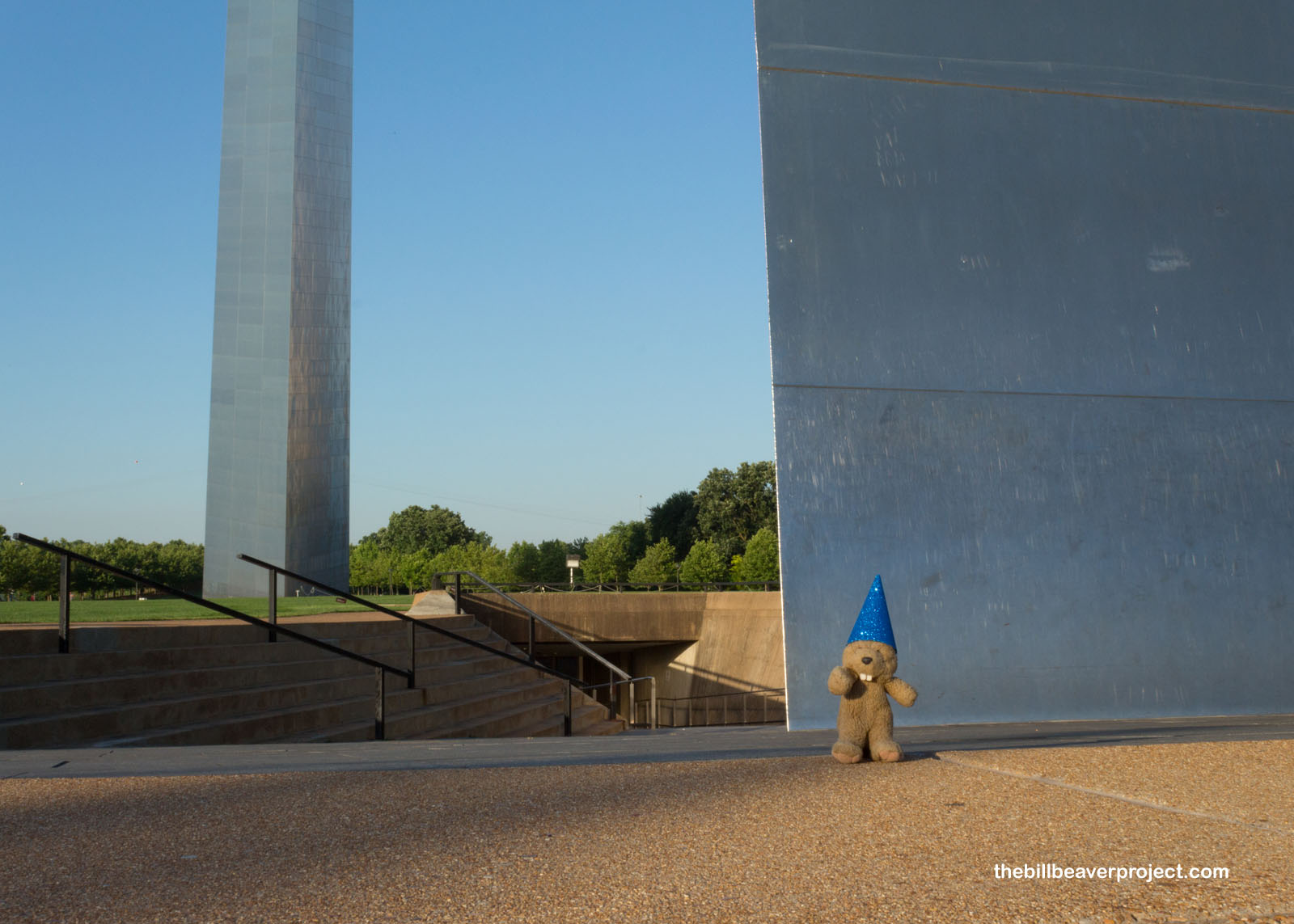 |
While St. Louis might not have seemed like a Renaissance city, “catenary” entered the English language from Latin via Thomas Jefferson, in whose honor the monument would be built! It’s a word for the natural resting shape of a chain (catēna), which becomes a strong arch when it’s inverted! And behold! This catenary arch is the tallest monument in the whole USA! It’s 75 feet taller than the Washington Monument and 325 feet taller than the Statue of Liberty! It’s made entirely of stainless steel and has an elevator that goes all the way up the curved edges to the tippy top! It turns out folks can not only look through the arch but over as well!
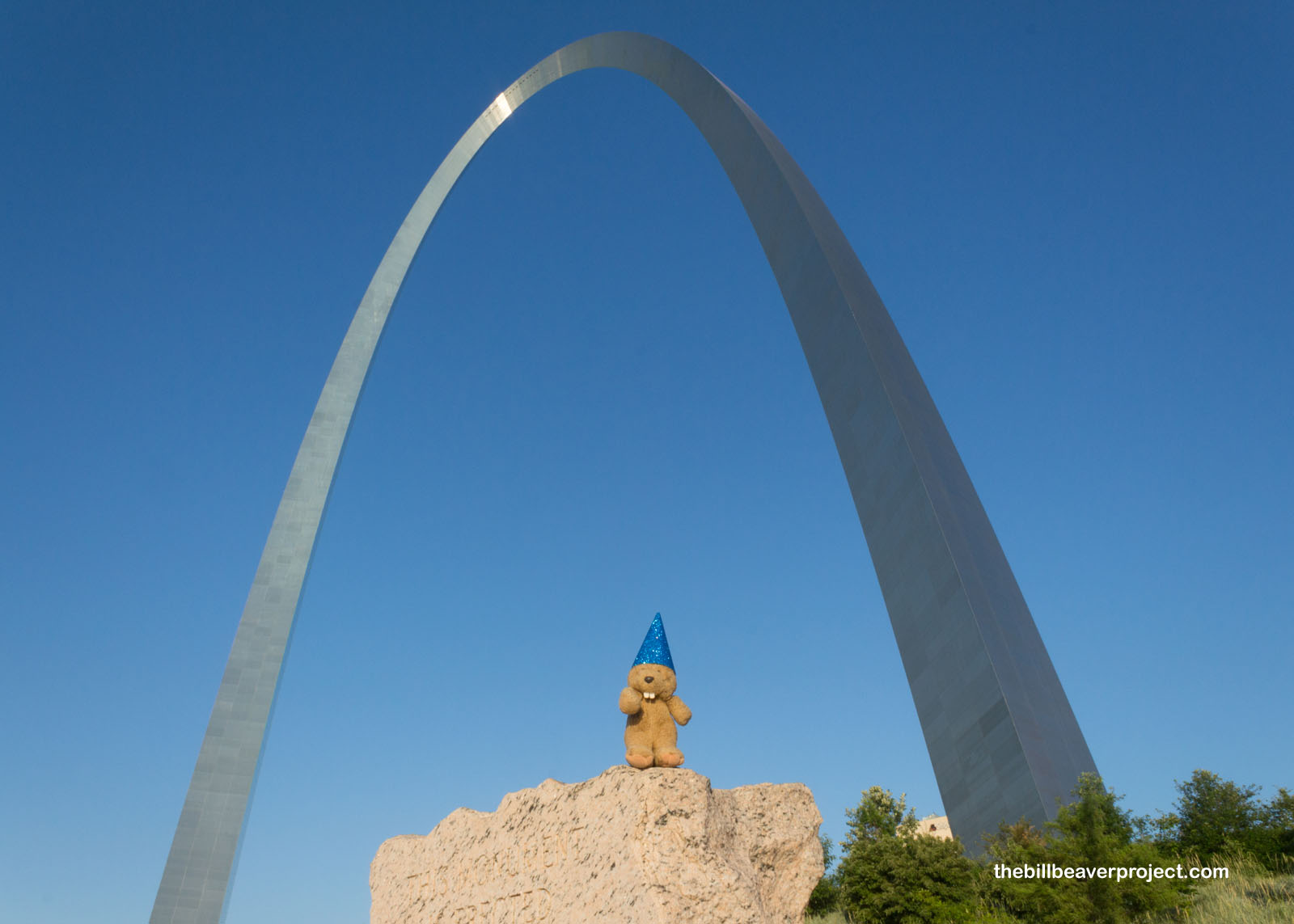 |
At the arch’s base were some smaller monuments that gave the area context. First, there was a stone monument honoring fur trader Pierre Laclède, who landed here in 1764 and founded St. Louis as a trading post for merchant, Gilbert Antoine de St. Maxent. It also memorializes the Old Rock House, a bar and Blues club that catered to the mostly African-American community, which was demolished in 1939, along with 37 other blocks of old St. Louis, to make room for the Arch!
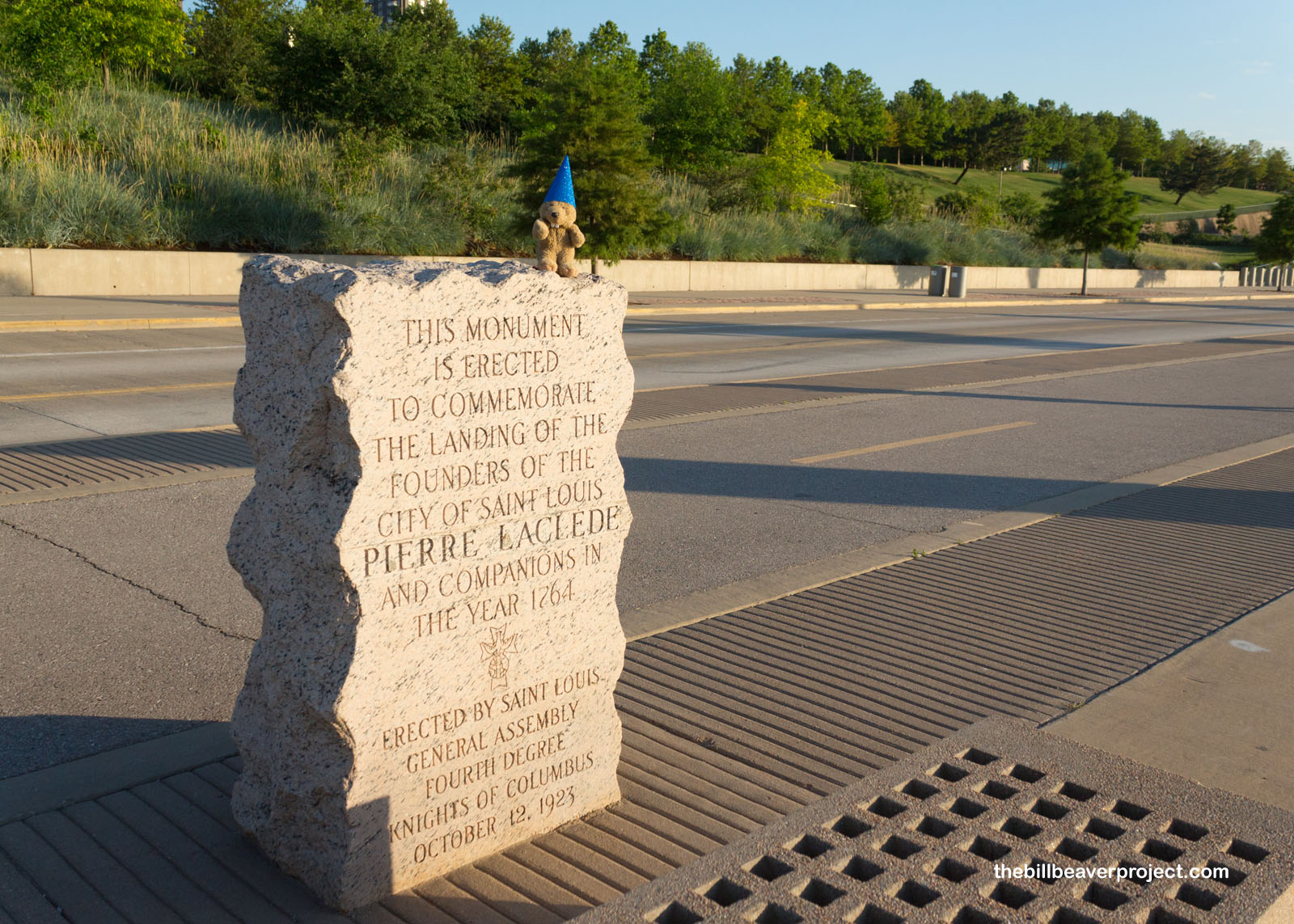 |
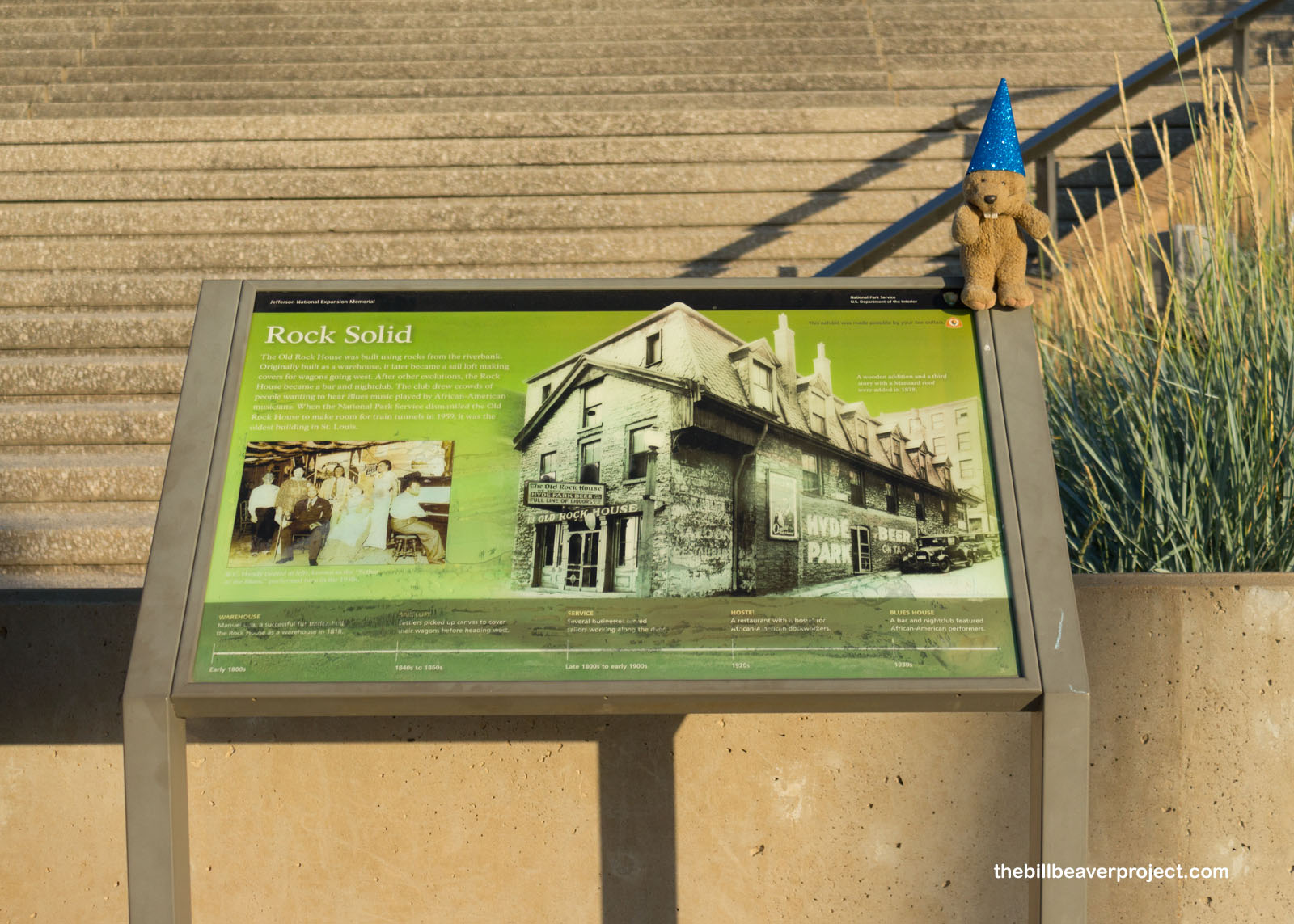 |
That wasn’t the only injustice to take place in what’s now Gateway Arch National Park! This park’s a two-parter, and the second part, on the opposite side of the Arch from the river, is the Old Courthouse, originally built in 1828. It was in the middle of its second remodel when one of the most infamous early Civil Rights cases took place within its walls!
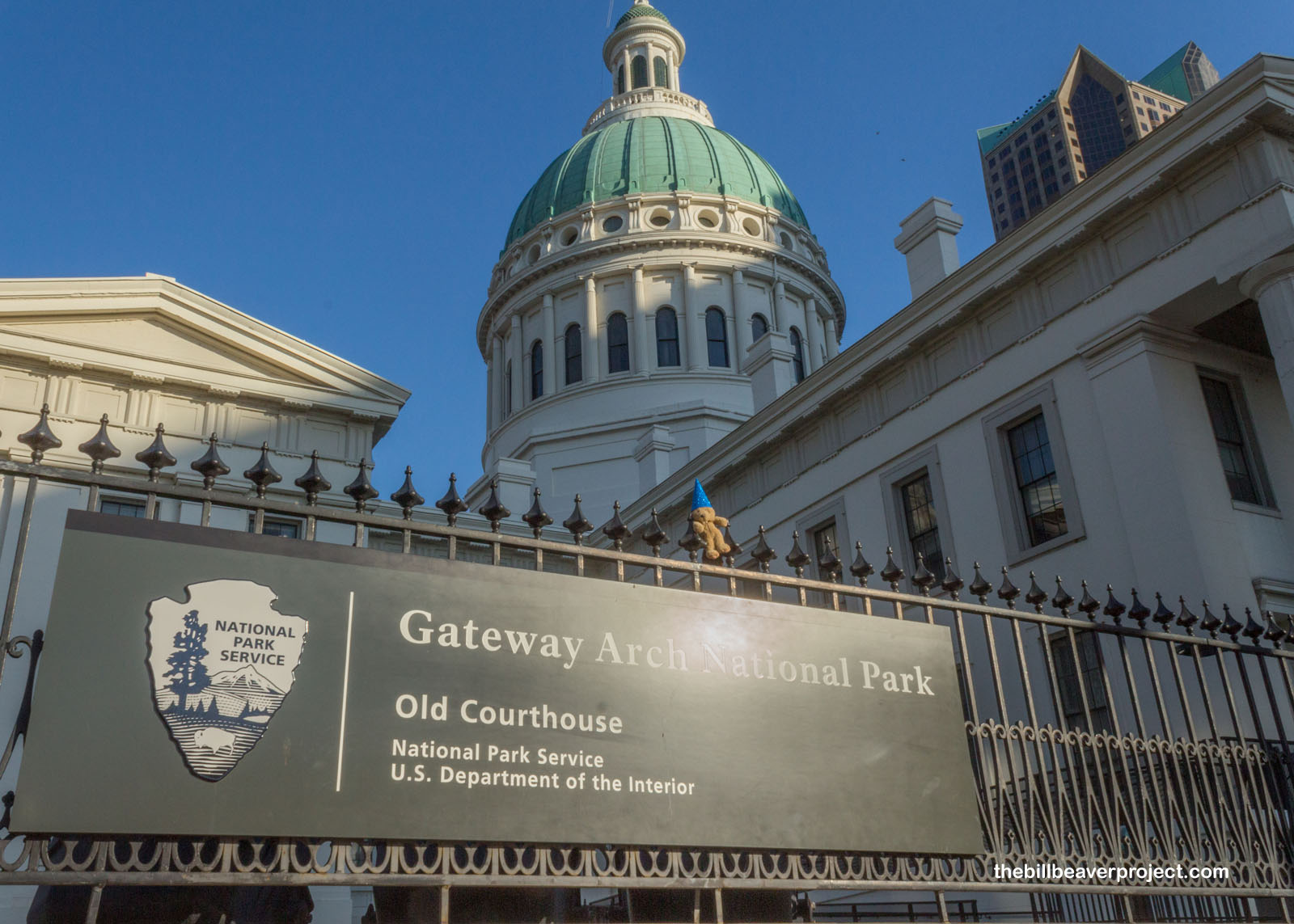 |
In April of 1846, Dred and Harriet Scott sued for their freedom, claiming that since Mr. Scott been taken as a slave into the free territories of Illinois and Wisconsin, he could not legally remain a slave, even though he and his wife were back in Missouri! They lost their first hearing in 1847, won their second hearing in 1850, and then, the widow of their former owner, Mrs. Emerson, took the case to the Missouri Supreme Court, which returned the Scotts to slavery, a decision upheld by the U.S. Supreme Court in Dred Scott v. Sandford on March 6, 1857. That decision claimed that, as property, not citizens, slaves could not sue for their freedom, and it was one of the catalysts for the Civil War!
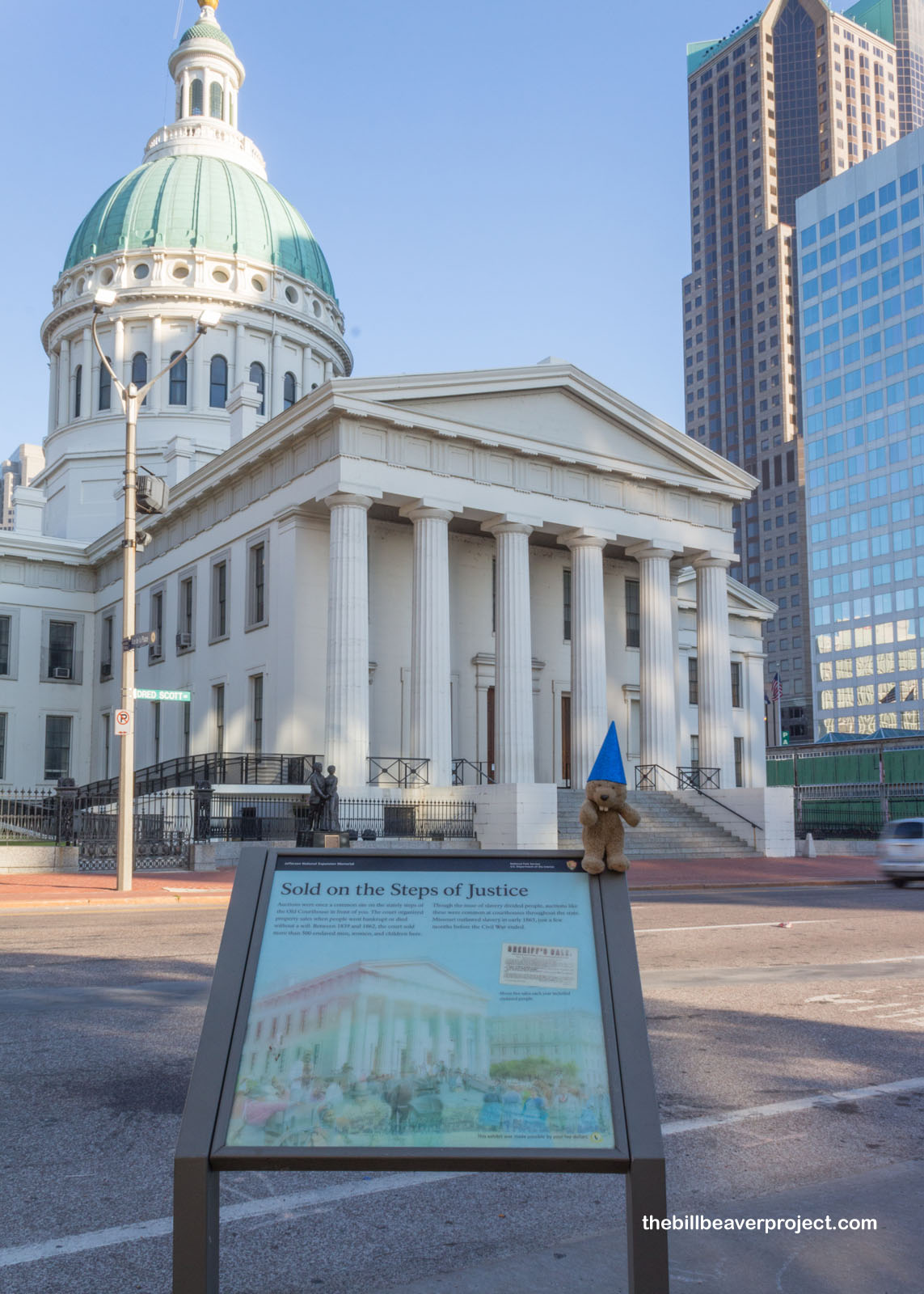 |
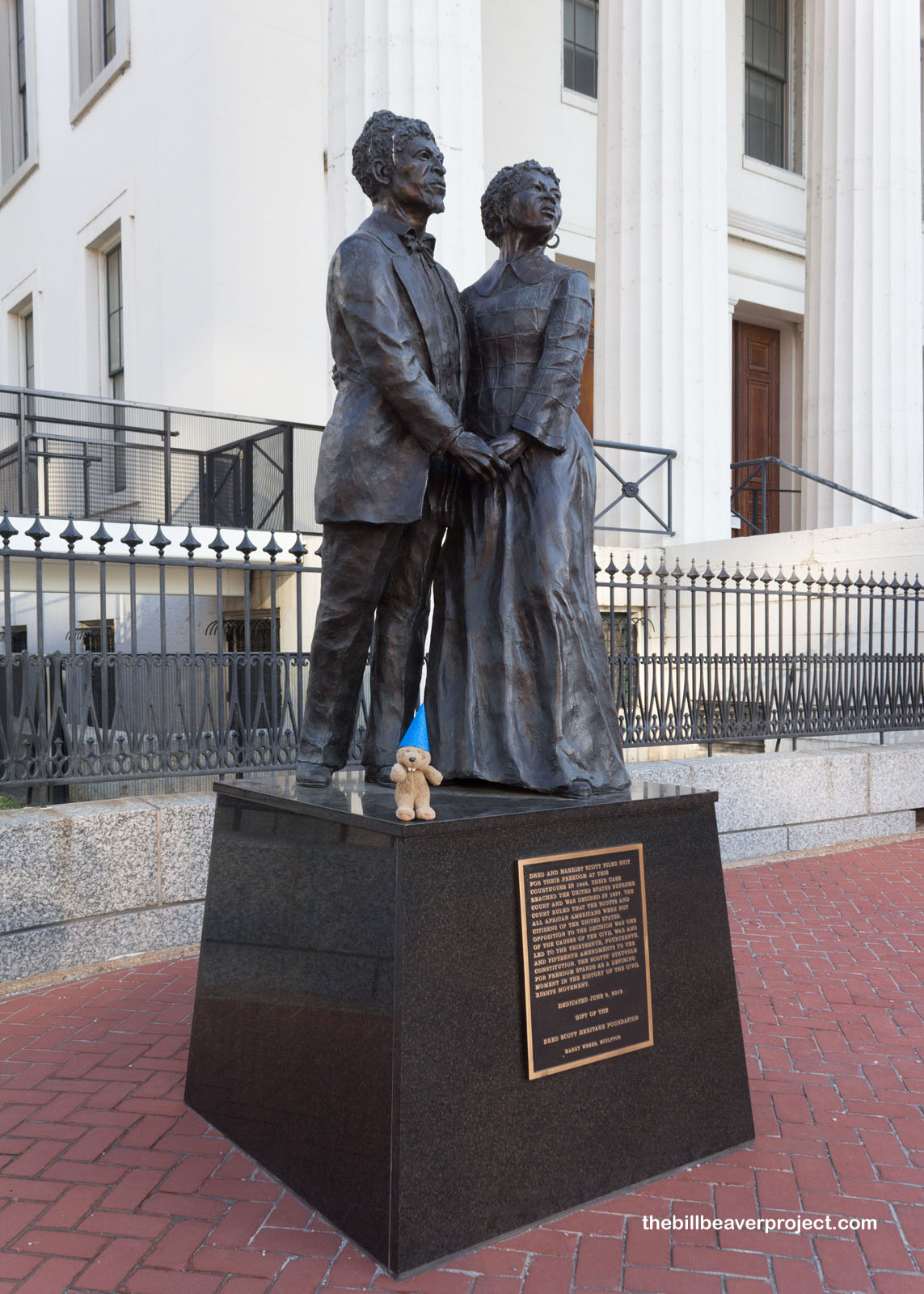 |
Mr. Scott wasn’t saved by the courts, but he got passed on to a descendant of his former owner, Congressman Taylor Blow, who freed him on May 26, 1857! sadly, Mr. Scott only got to experience freedom for about a year before dying of tuberculosis in 1858. Mrs. Scott survived through the Emancipation Proclamation, and some of the Scott descendants still live in St. Louis today!
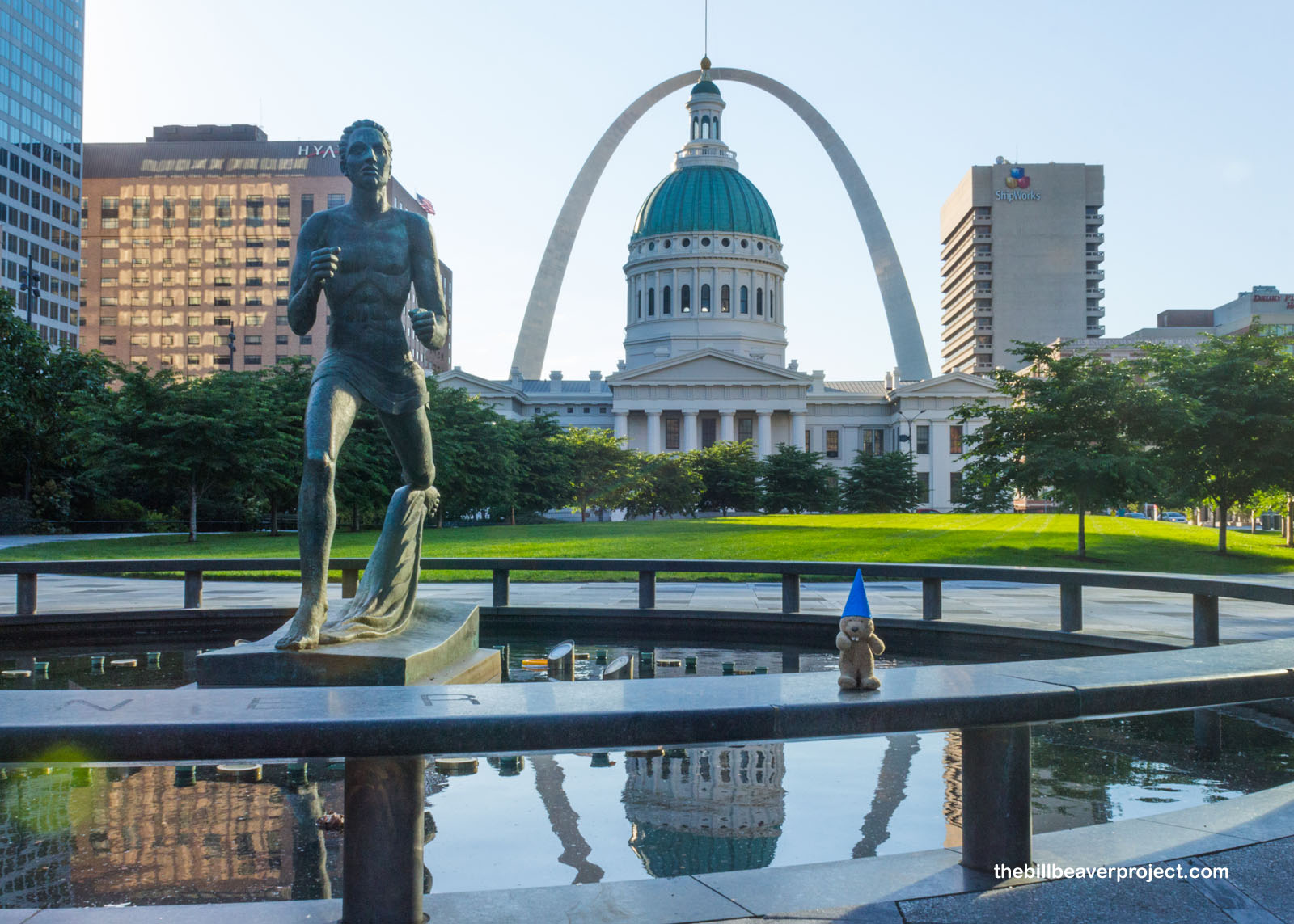 |
I took a stroll down Market Street to see what other historic sites I could find before moving on to my next park. One of the big ones was the magnificent St. Louis Union Station, completed in 1894 in Romanesque and medieval revival styles! At the time, it was the largest railroad terminal in America, complete with a luxurious Terminal Hotel that’s still open today!
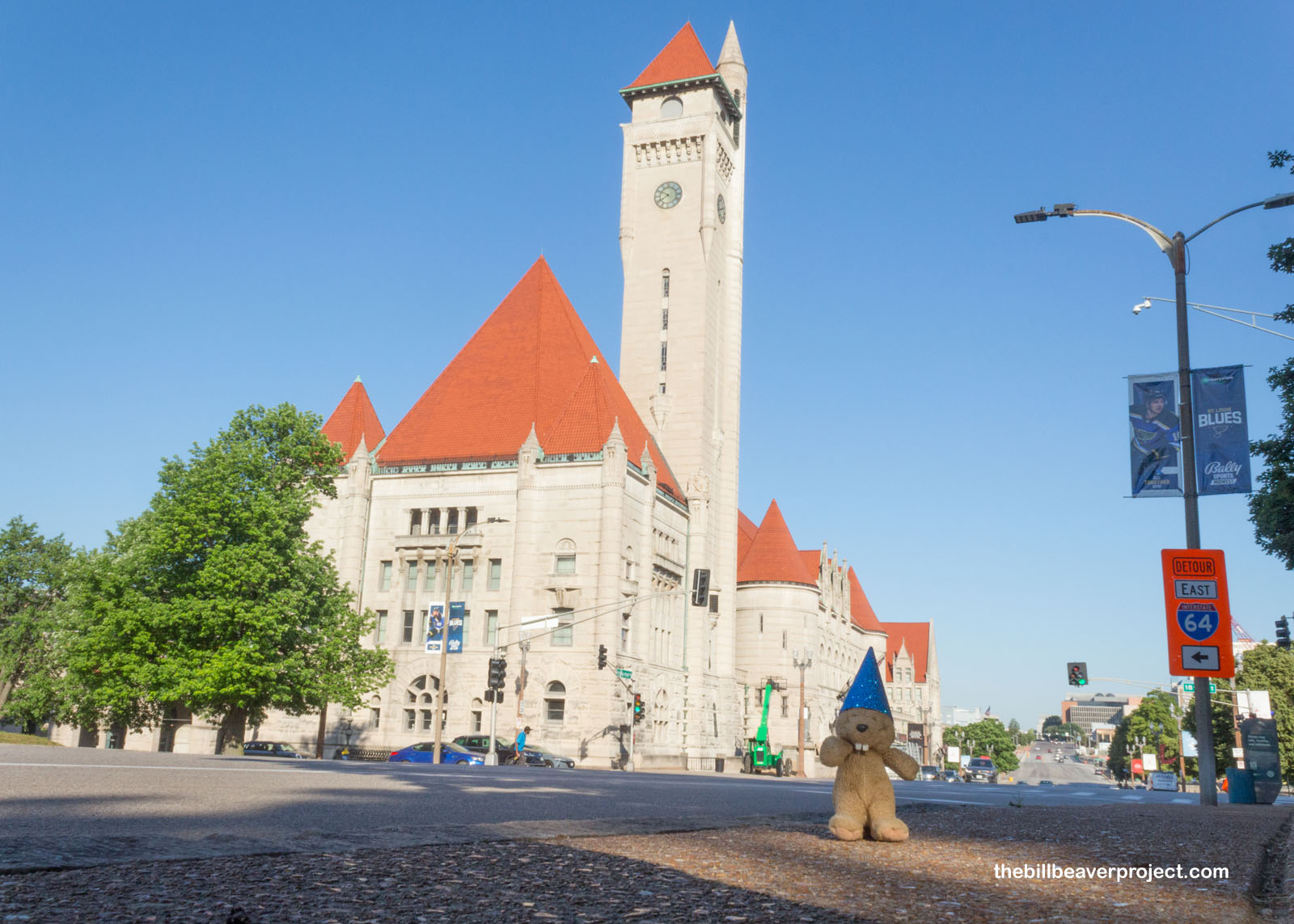 |
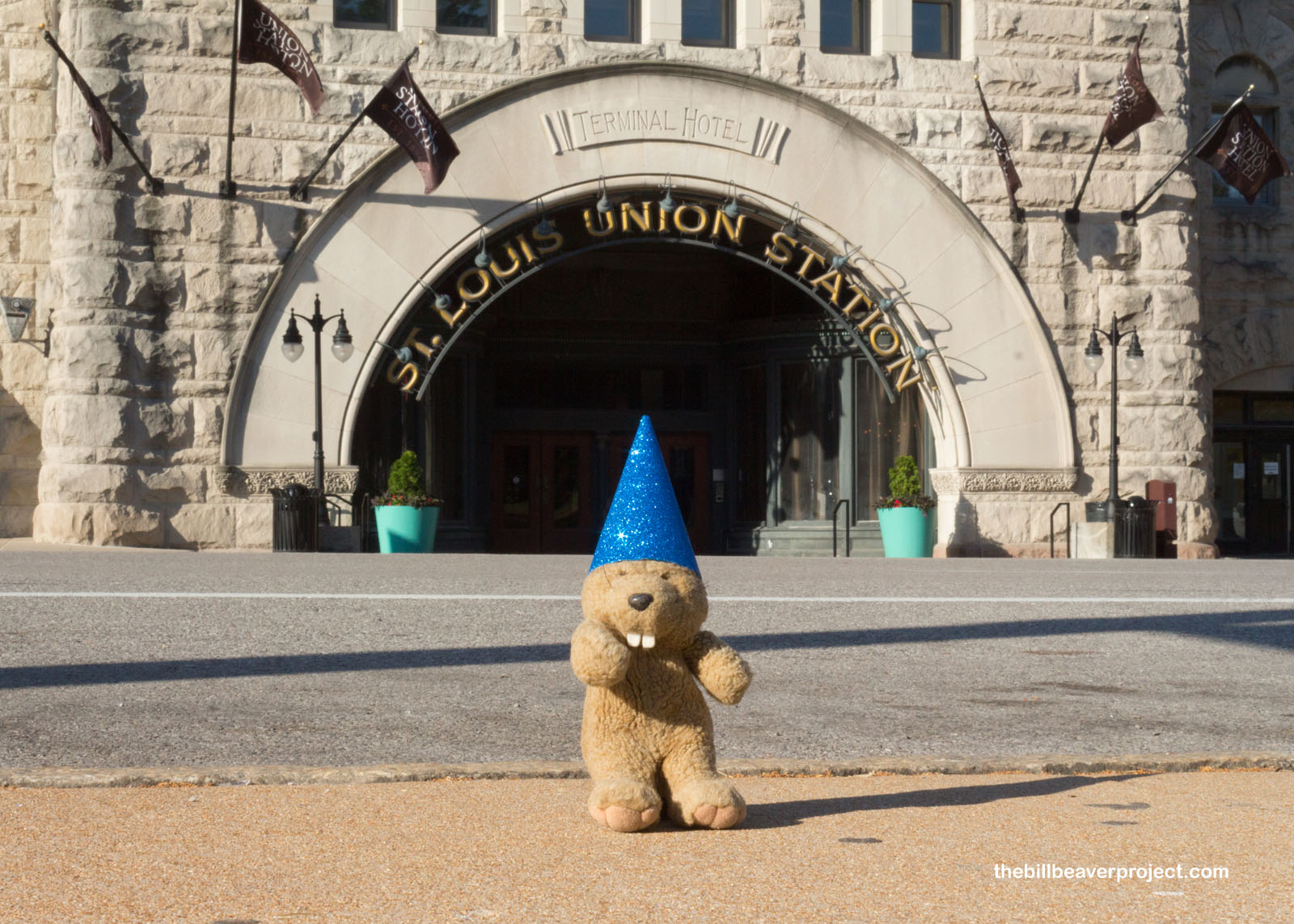 |
I passed by the home of Scott Joplin, hailed as the “King of Ragtime” with over 40 pieces under his belt, including what is probably the most famous of all ragtime tunes, “The Entertainer!” That was composed right here in St. Louis, where Mr. Joplin moved in 1901! During his two-year stay in St. Louis, he really started to harvest the fruits of his work, and his royalties let him transition from a performer to a teacher and composer! It was also here that he wrote his first opera, called “A Guest of Honor,” which has sadly been lost to the ages!
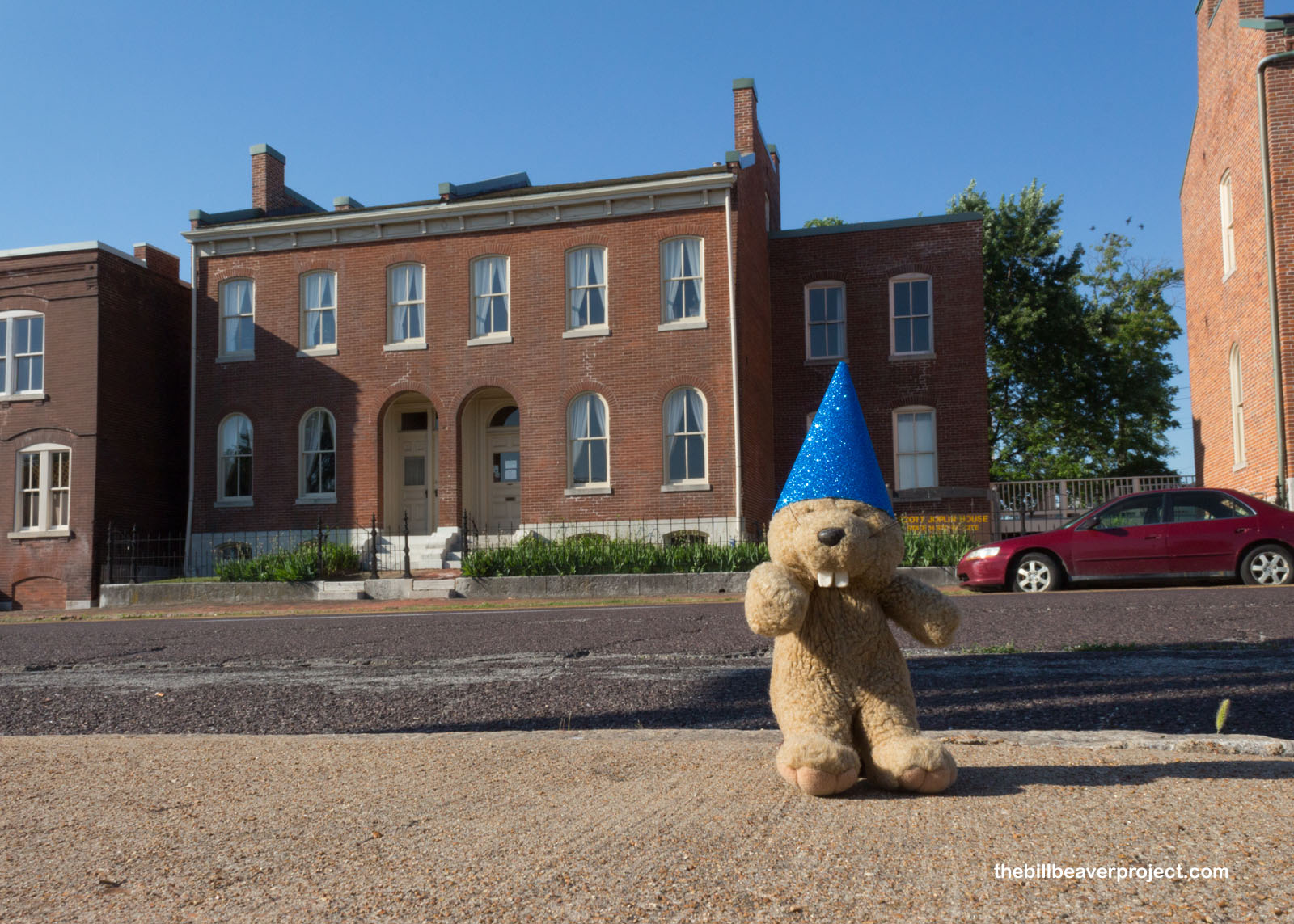 |
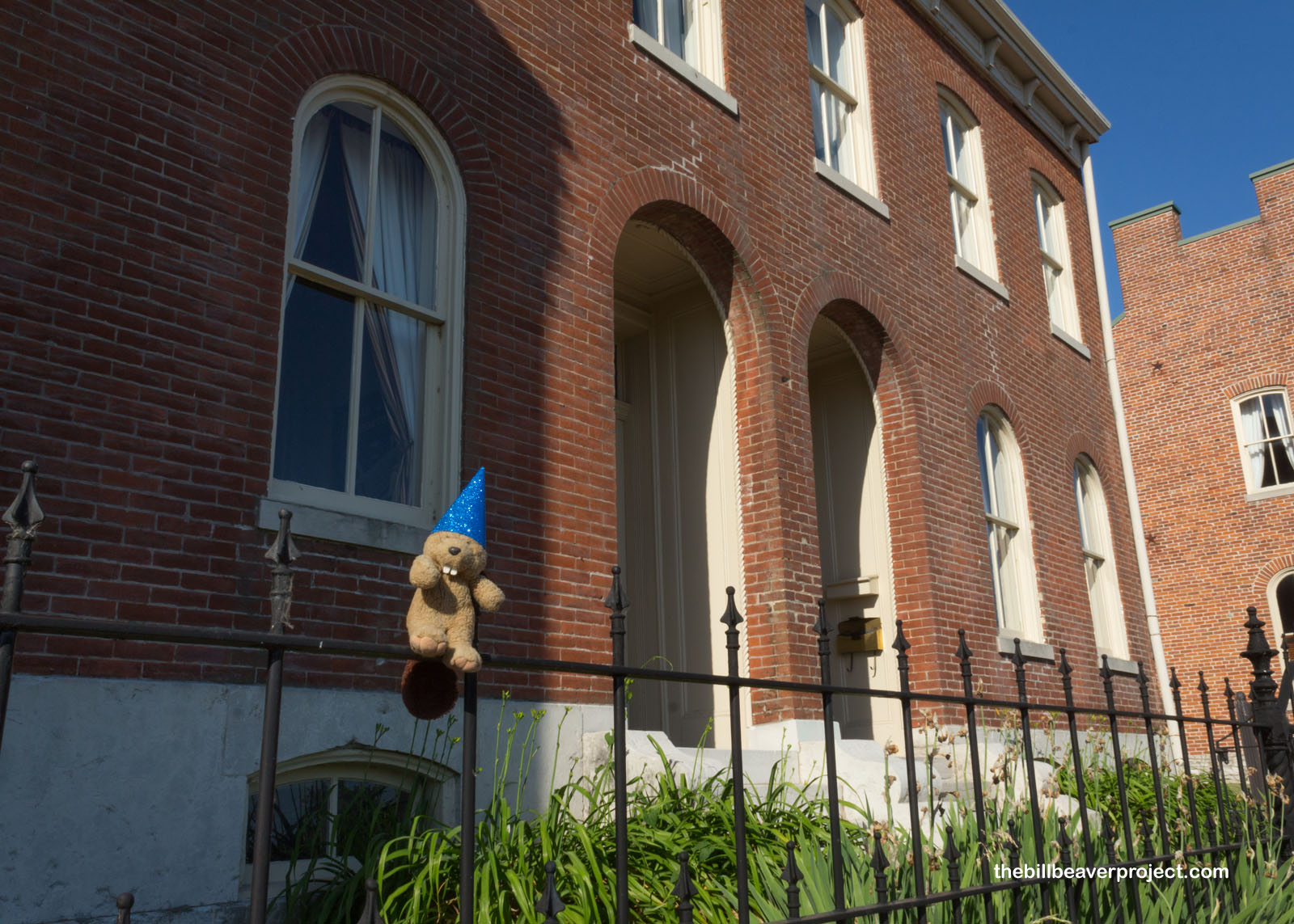 |
As I circled back toward the hotel (boy, was it starting to heat up), I spotted a huge sign up on the side of a building announcing that this was the site of the first official World Chess Championship match! This match, between Britain’s Johannes Zukertort and Austria-Hungary’s William Steitnitz kicked off on January 11, 1886 in Cartiers Academy Hall in New York City, then moved here for four more matches before heading off to New Orleans to conclude the duel. On March 29, Mr. Steitnitz took the title with a strategy known as the Vienna Game!
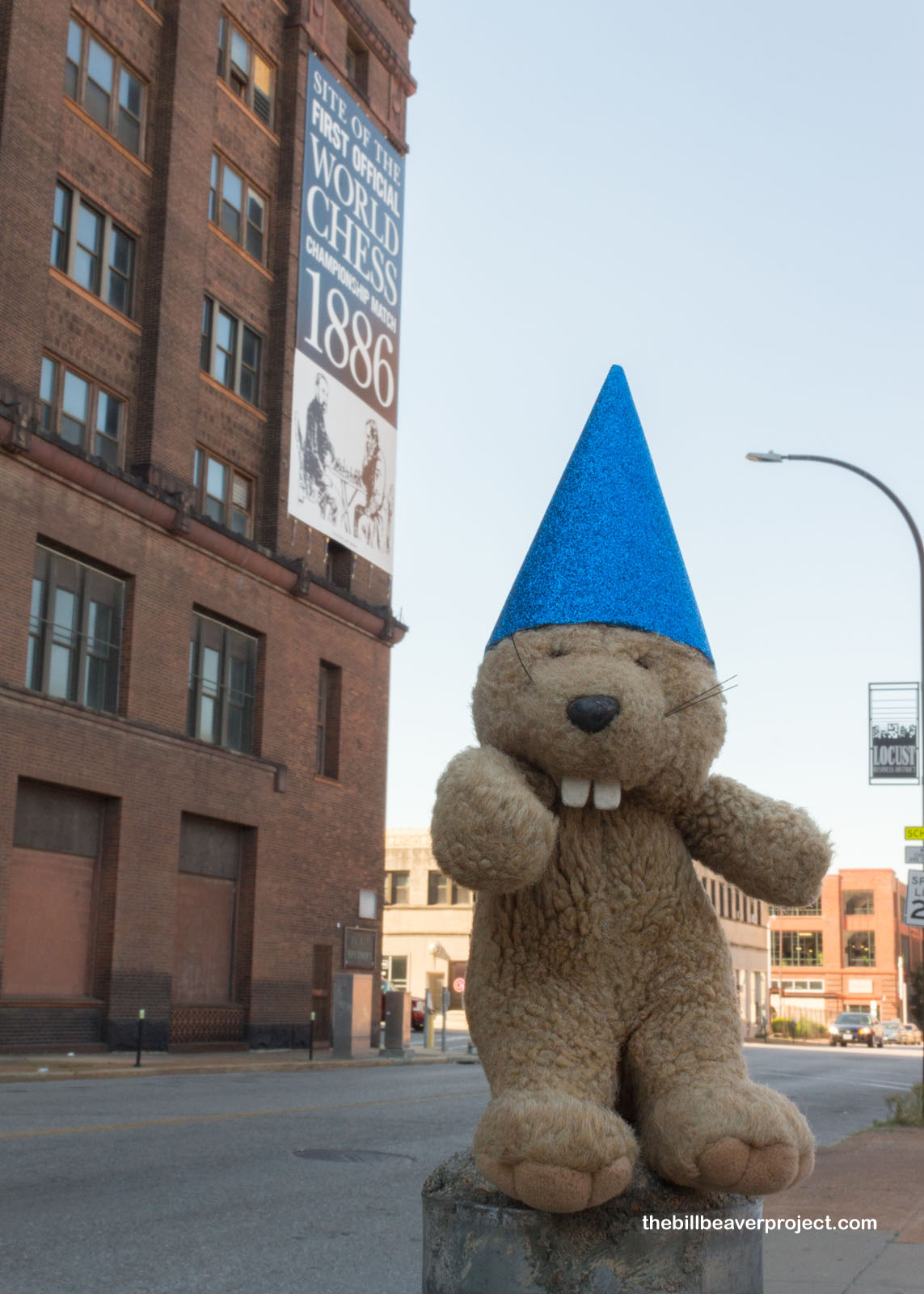 |
From there, I returned to the MAC hotel and made my preparations for the next big leg of the journey, about an hour to the south and over 150 years further back in time!
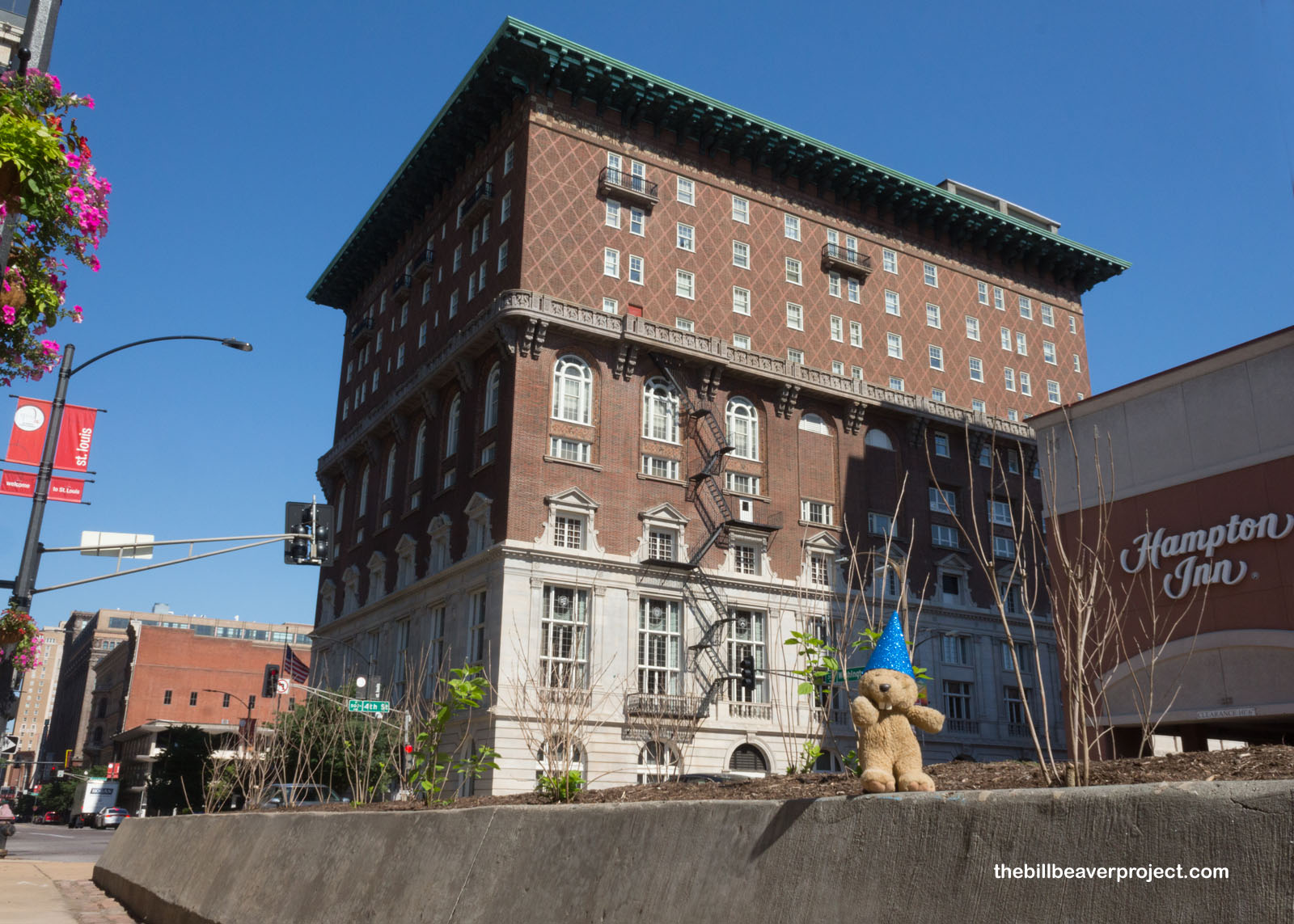 |
This was the town of Sainte Geneviève, founded by French Canadians in 1735, making it the oldest permanent European settlement in what’s now Missouri! They named this river depot after the peasant girl from Nanterre who became an advisor to kings, got credit for praying the Huns away from Paris, and took up the title of patron saint for that city!
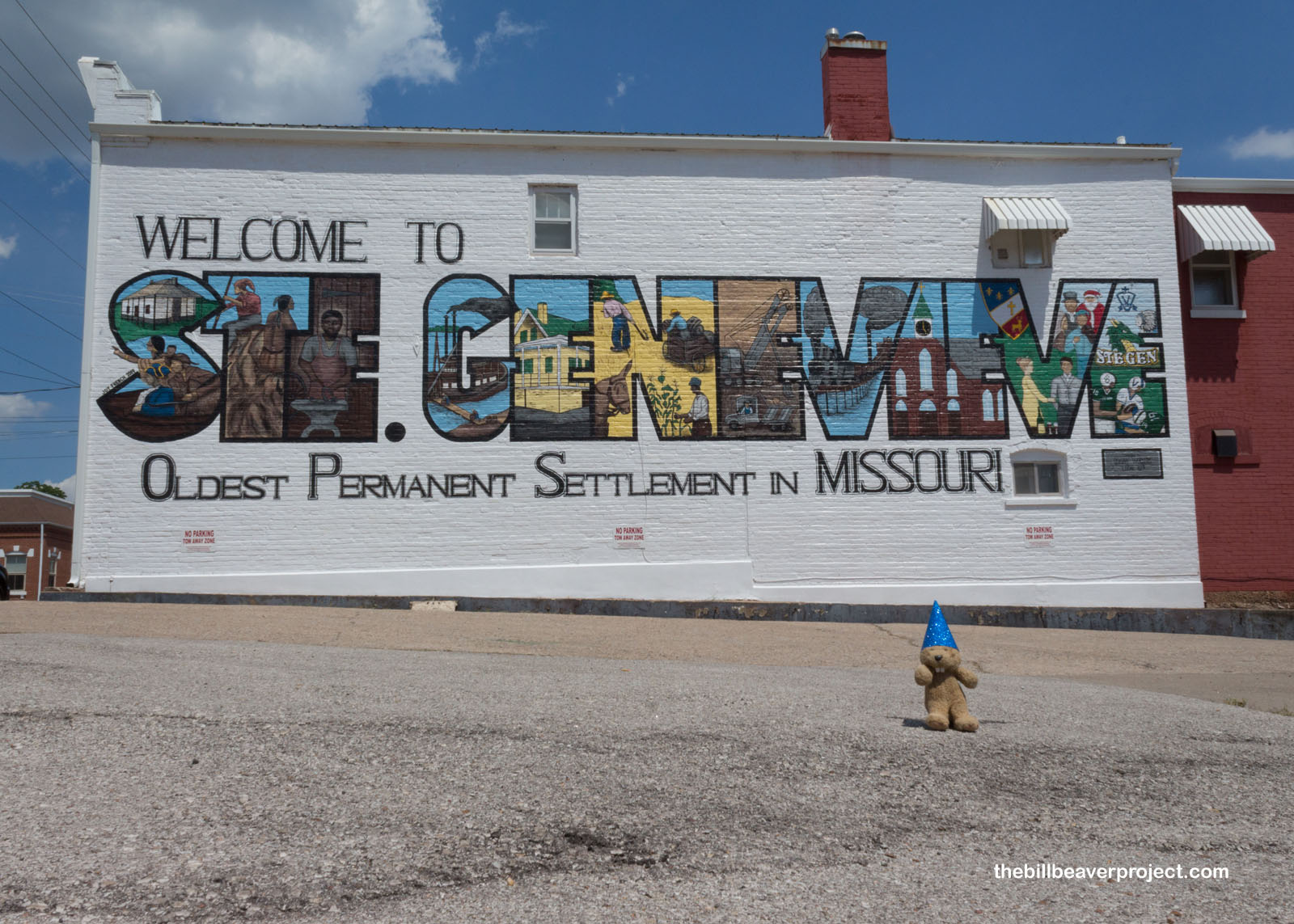 |
There are a lot of firsts “West of the Mississippi” in Ste. Geneviève! Here were the first Catholic church, Masonic lodge, and brick house west of the Mississippi, built up from the rich agricultural fields of Grand Champ and the mining of lead and salt, which you’d hope never got mixed up!
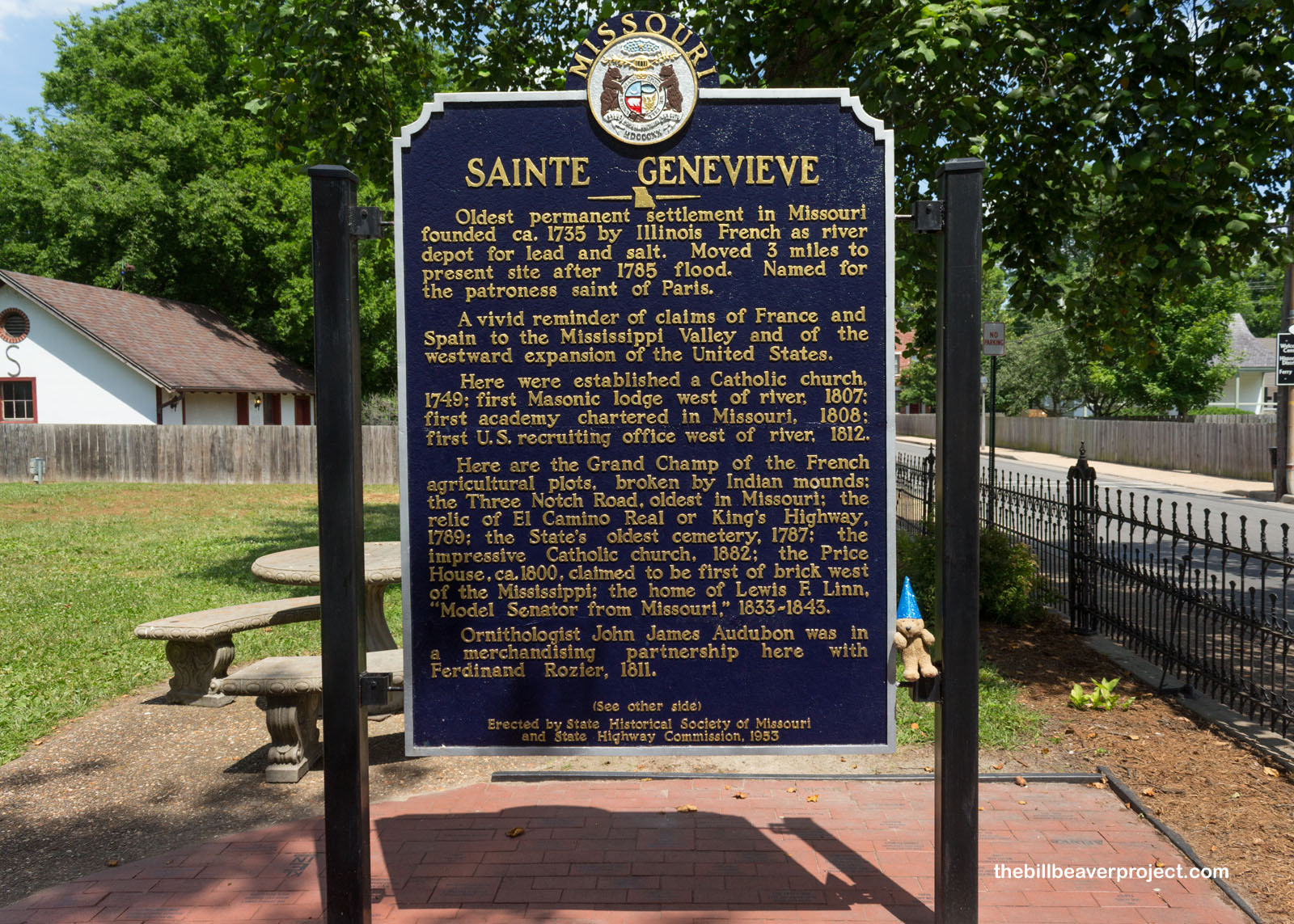 |
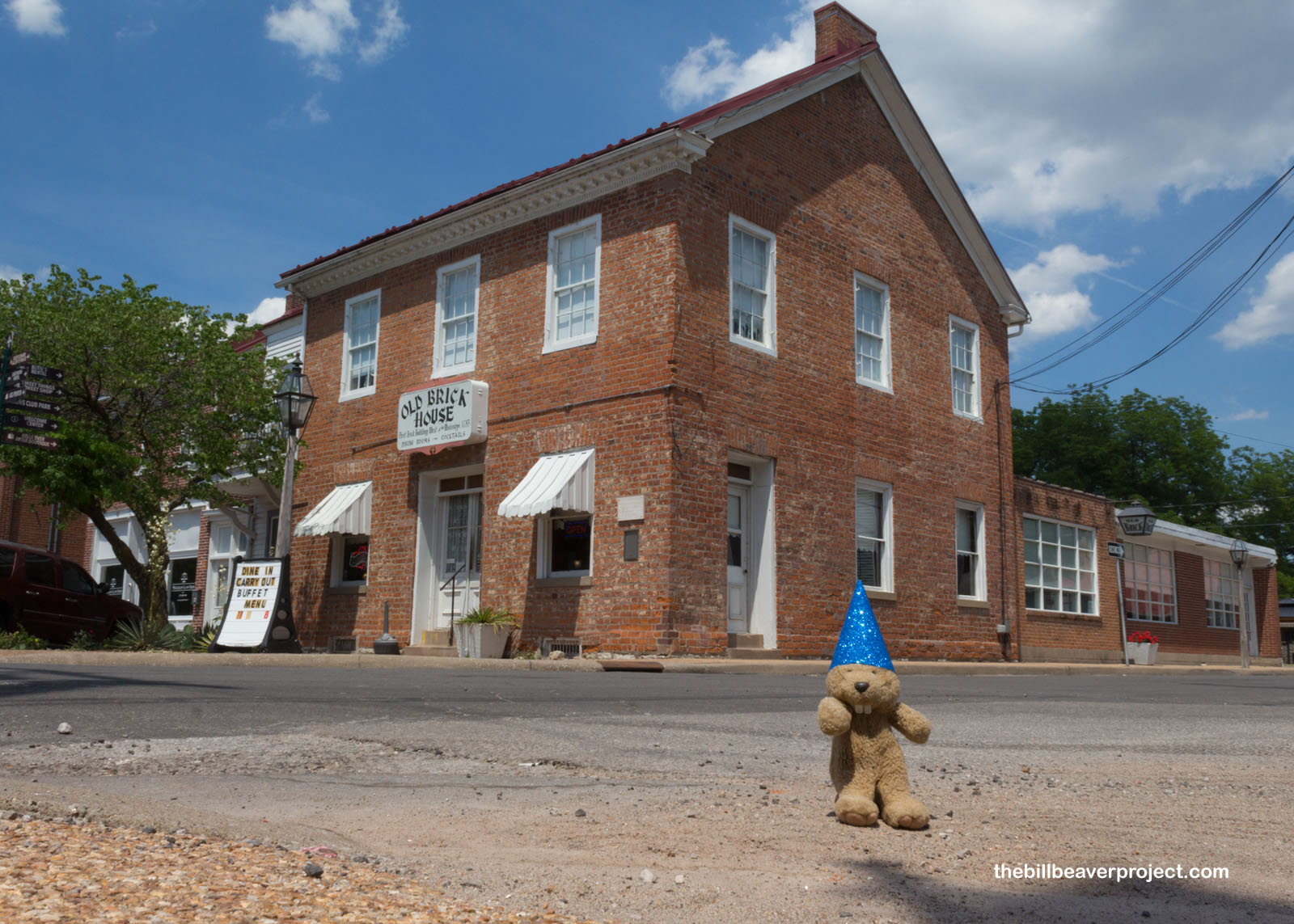 |
As of October 30, 2020, this town is also home to Ste. Geneviève National Historical Park, which preserves as much of the town as possible, as it stood in 1785, after a flood forced folks to relocate here! When they did, it was after France gave up its land west of the Mississippi to Spain! That made these French technically Spanish until France took the land back in 1800 then sold it all in Thomas Jefferson’s Louisiana Purchase, making these ping-ponged residents Americans by 1803! The park still showcases some of their homes!
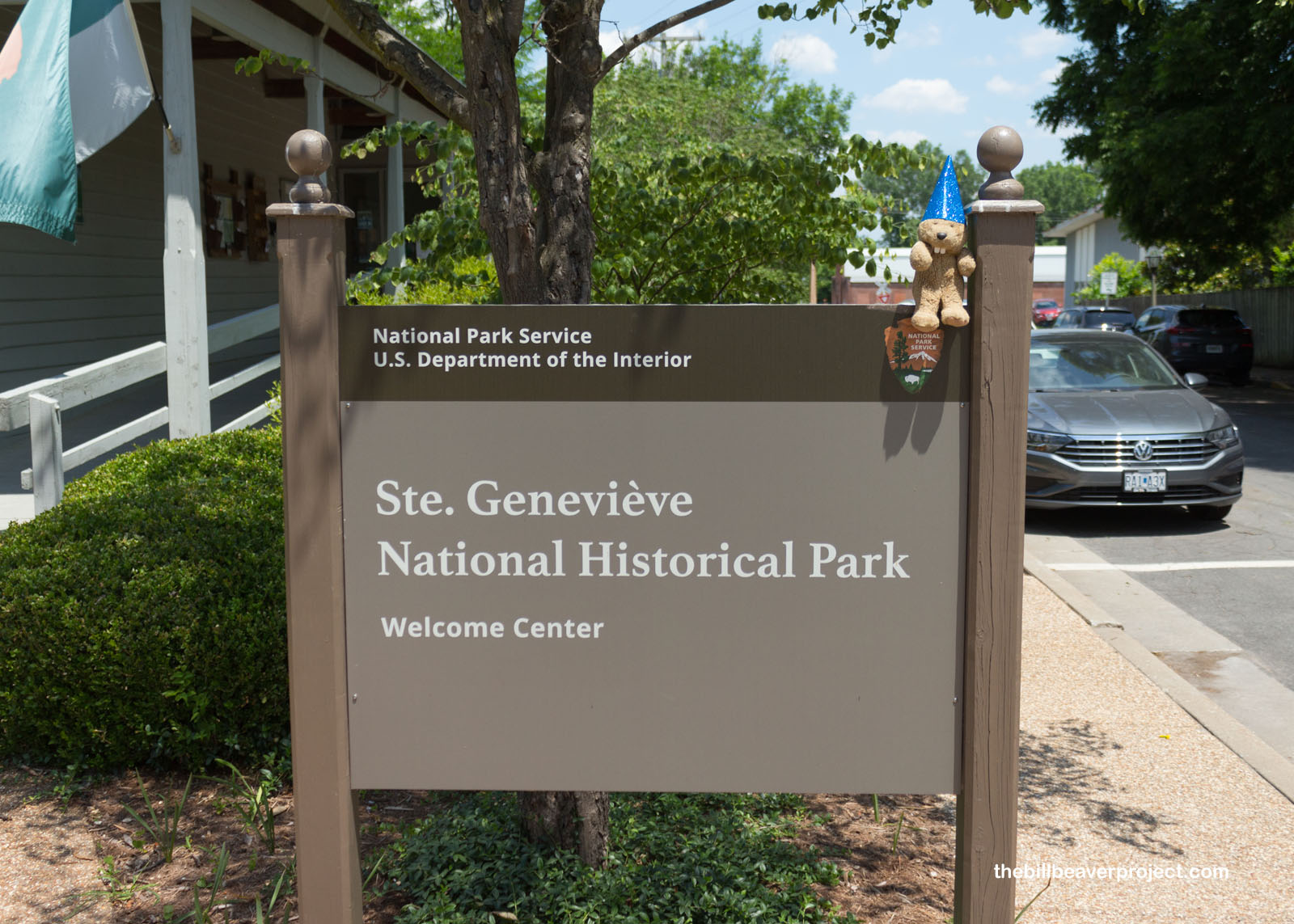 |
In a counter-clockwise walkabout, I first visited the home of Jean-Baptiste Vallé, who was the last French commandant in Ste. Geneviève and spent six months in 1804 overseeing the transition from French to American ownership! His dad, François, had brought the Vallé name down from Beauport, Quebec in 1749, set up the Vallé Mining Company, and served as the town’s first commandant! He changed the name from La Vallee to Vallé because of Spanish rule.
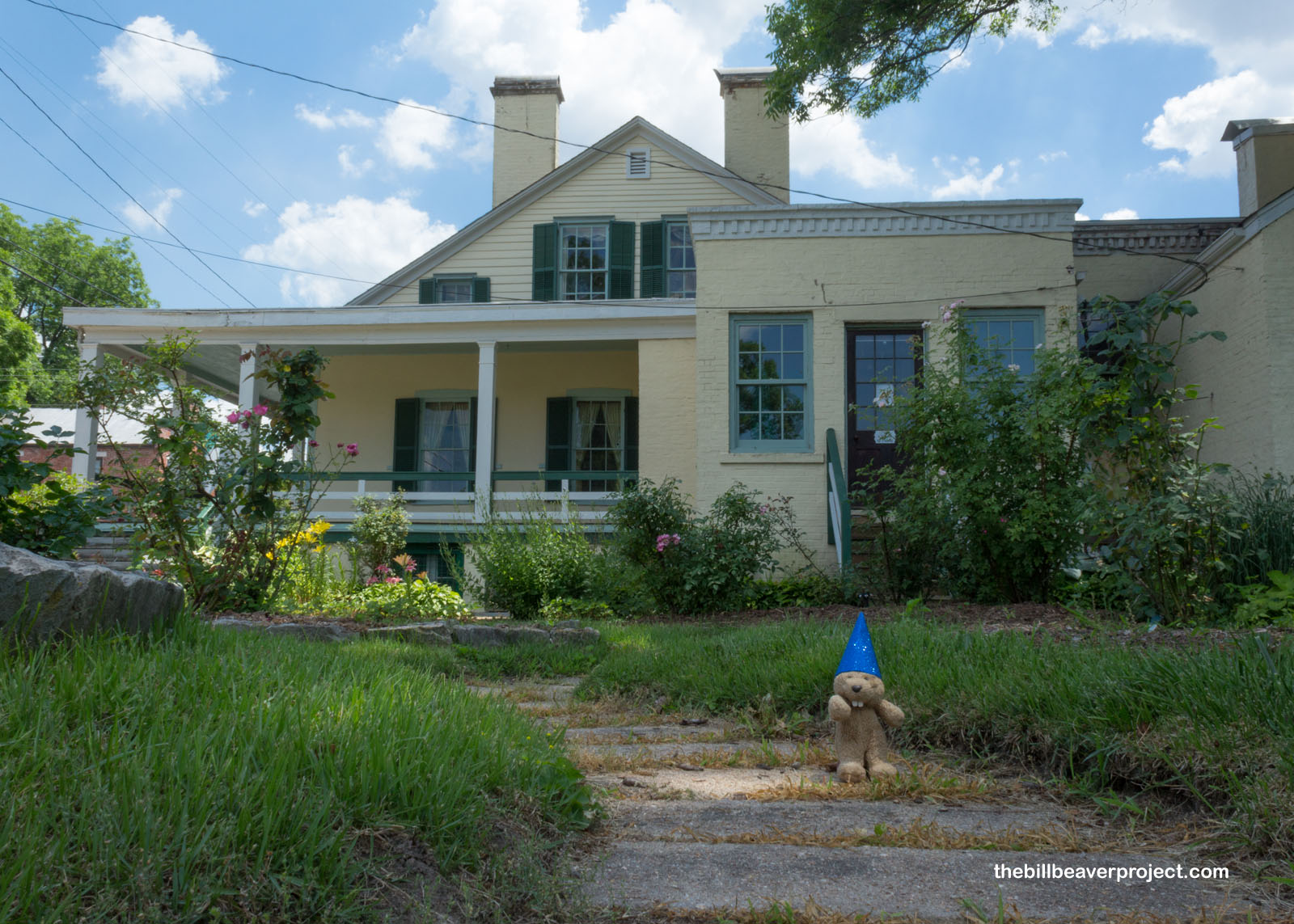 |
Jean-Baptiste’s son, Félix, didn’t leave town after the transfer. Like his dad, Félix was big on mining enterprises and also continued his dad’s mercantile business from this stone house, where he and his wife, Odile, moved in 1835! A state historic site on its own, this Federal-style limestone house still has a fully stocked mercantile and a period-authentic garden!
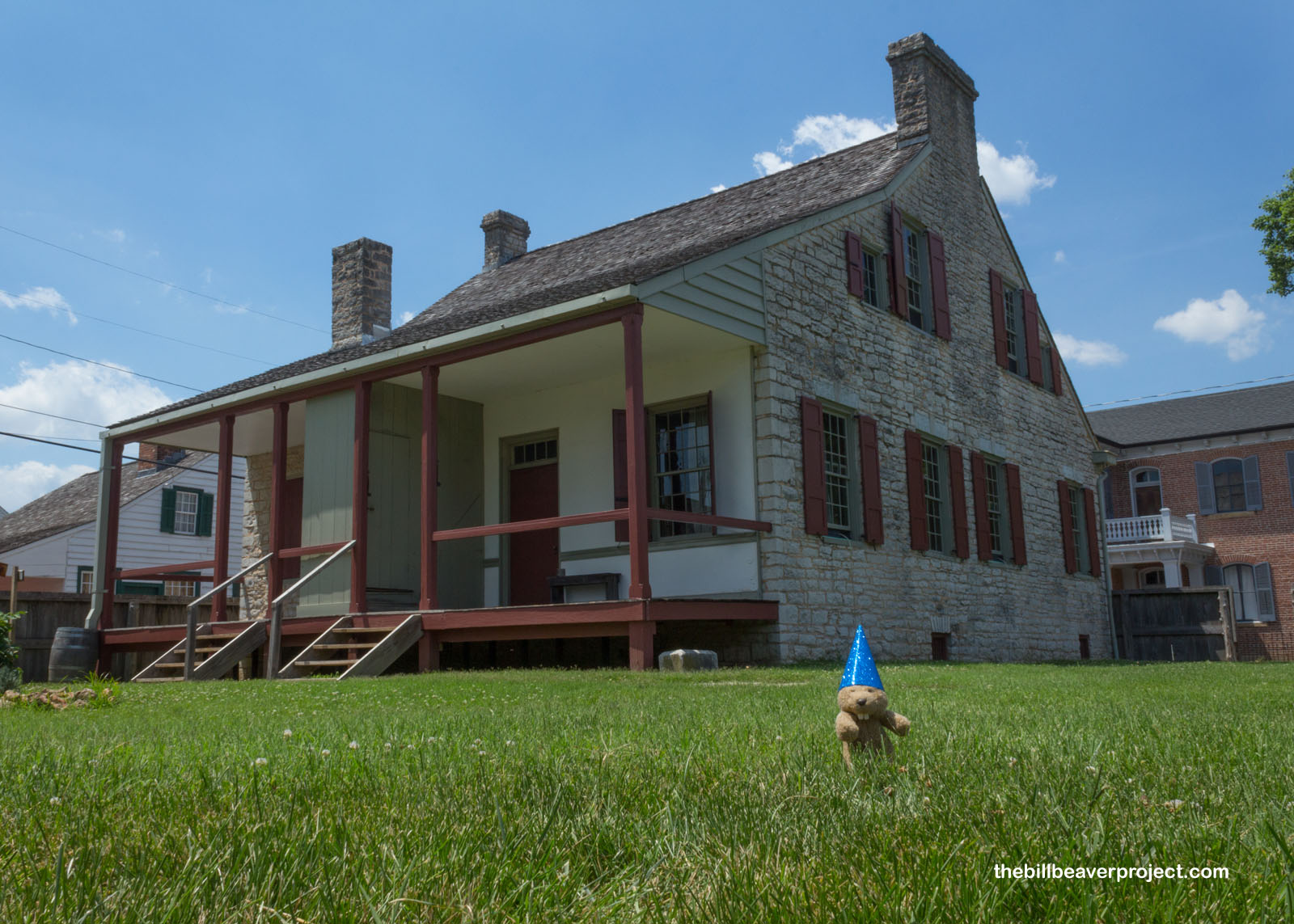 |
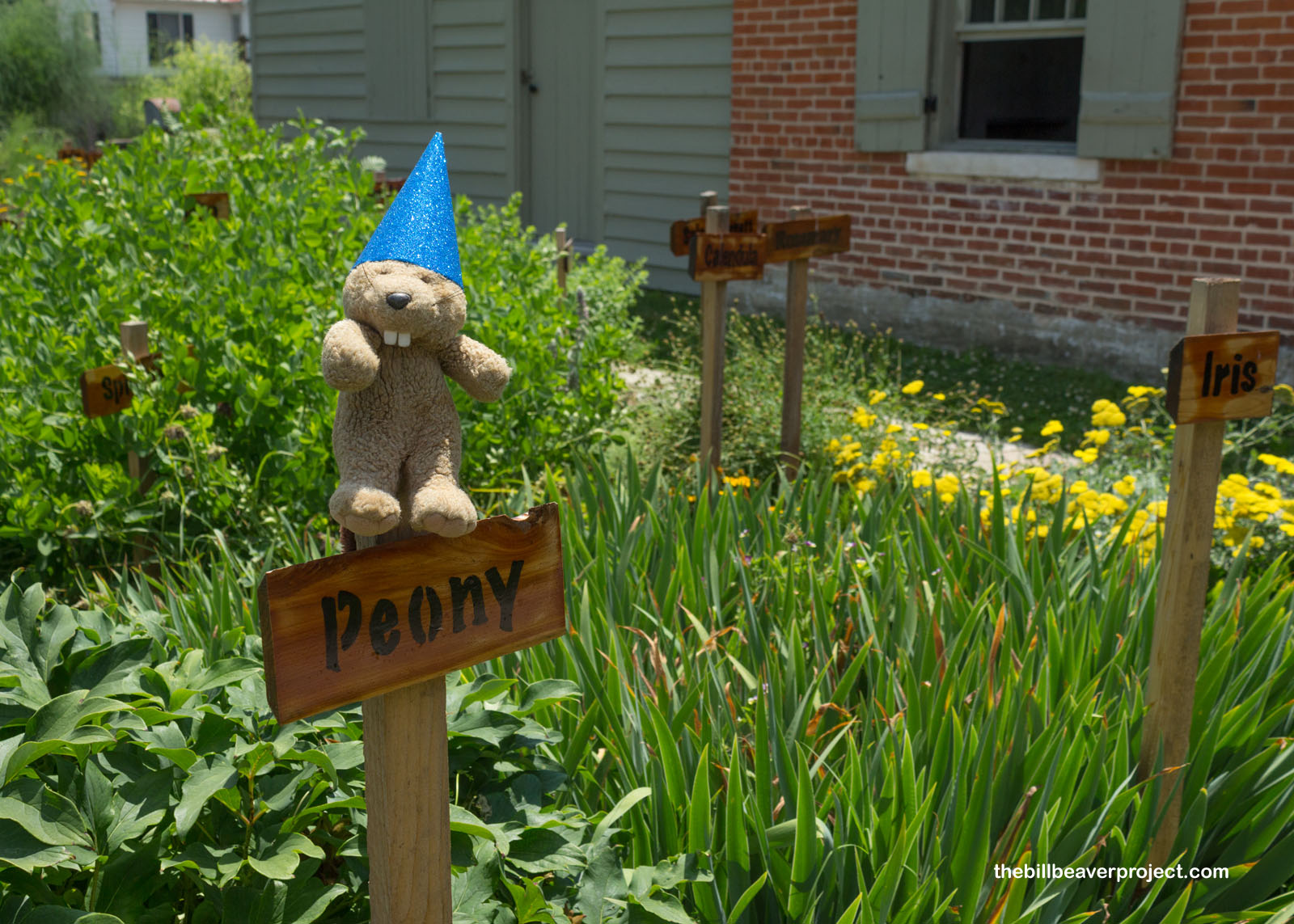 |
A few blocks up Merchant Street stood La Maison Guibord-Valle, the 1806 home of Jacques Guibourd de Luzinais! Monsieur Guibord came here through all kinds of scary circumstances! He was the secretary to a wealthy plantation owner in Haiti, who was smuggled out of the country by a slave named Moro during the slave revolt, returned to France during the Reign of Terror, and sailed with Moro to a French-speaking American colony called Ste. Geneviève. Before they got here, they were shipwrecked and left without a penny, but two Jean-Baptistes helped them out: the commandant and J.B. Barbeau, whose daughter, Ursula, would become his wife! History is unclear on what happened to Moro…
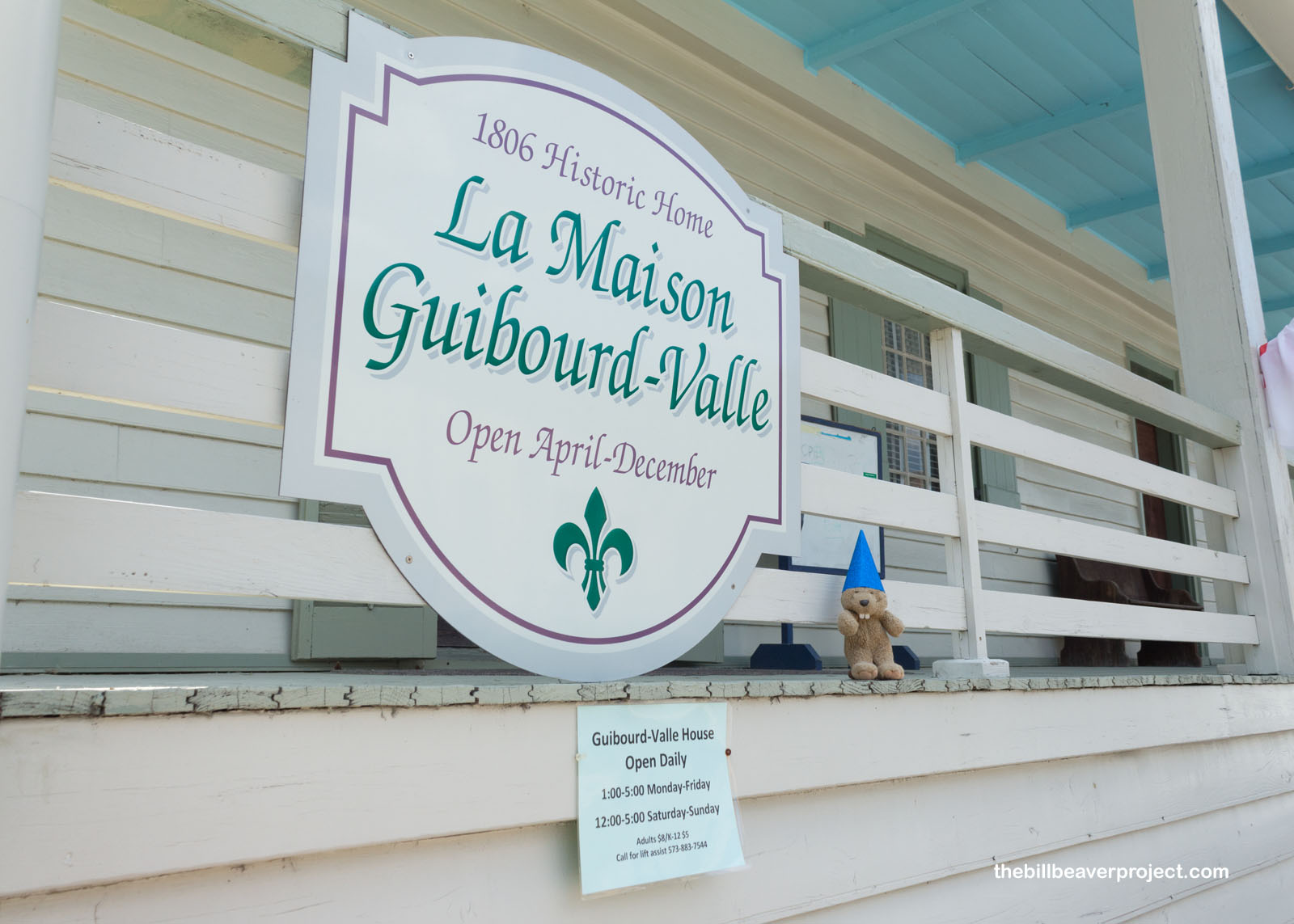 |
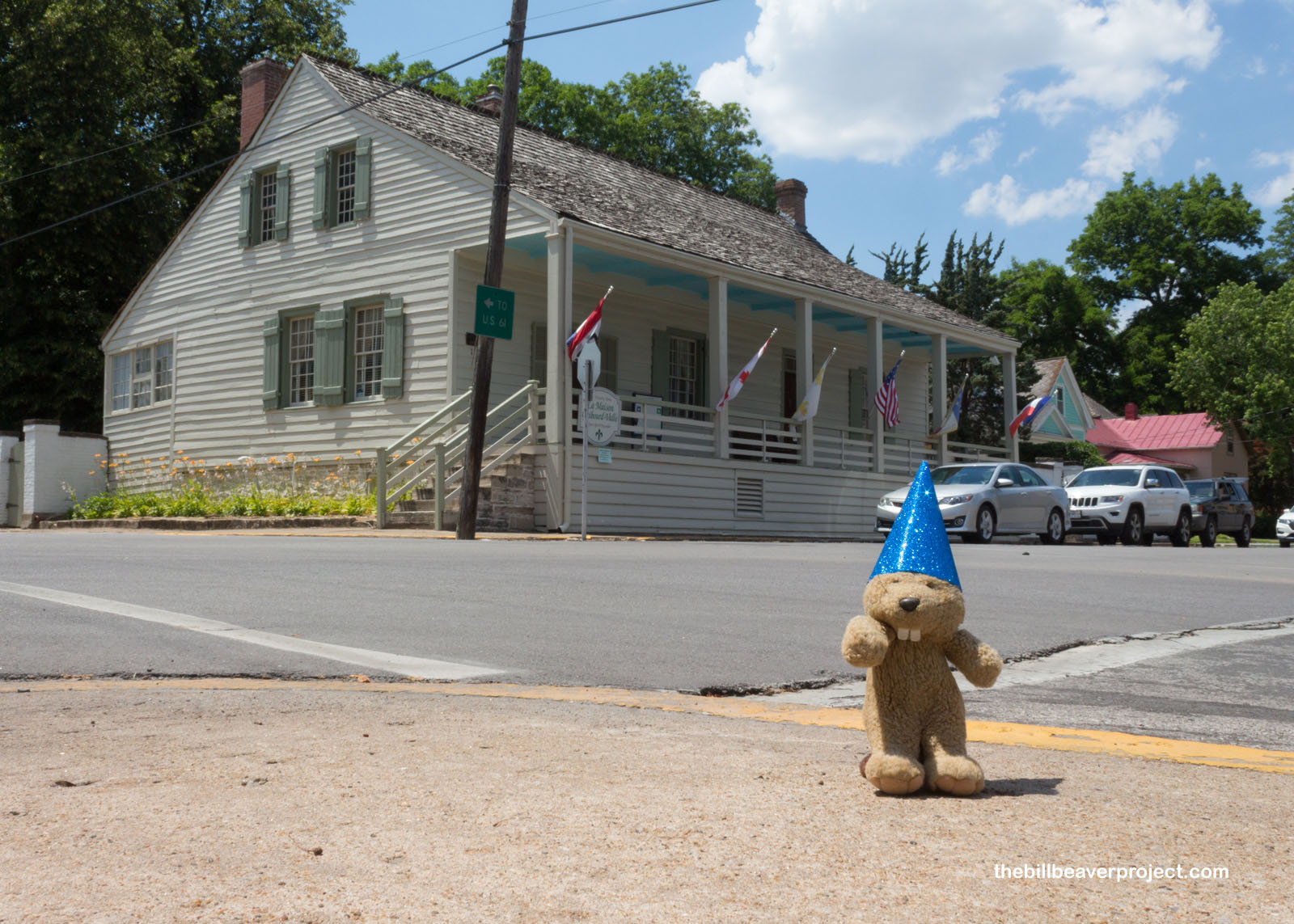 |
Completing the circuit around the main part of town, I peered over the high fence surrounding the Louis Bolduc House, built in 1790 by another merchant and lead miner. Today, it’s one of the few surviving examples of poteaux-sur-sol architecture, which has its support posts embedded in a flat sill that sits on top of the foundation, instead of going into the ground. These hold up the expansive roof over the porch!
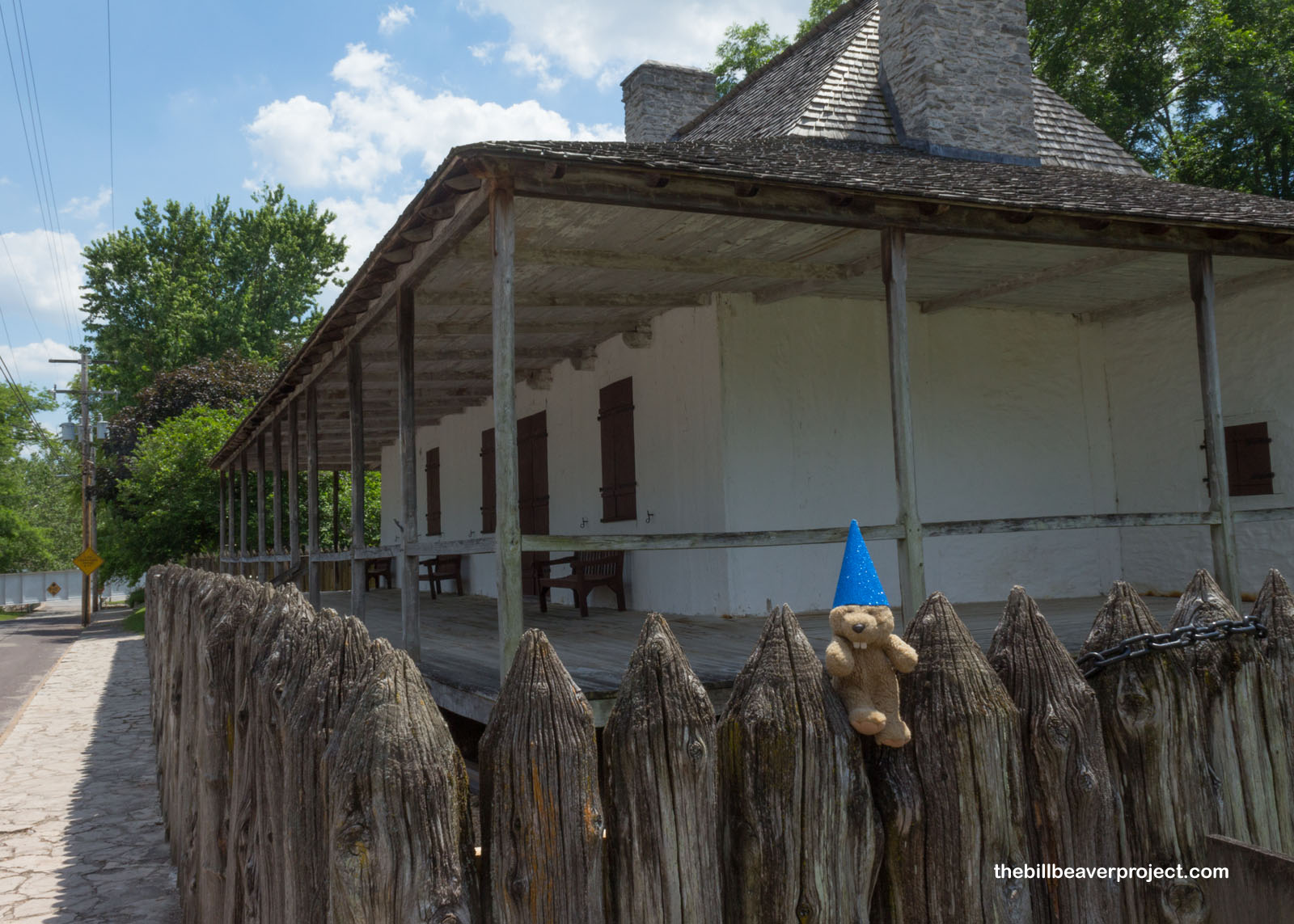 |
Ste. Geneviève is really the best place in the country to see this kind of architecture, with three of five examples right here! The next house I visited was the oldest still standing, the 1790 Green Tree Tavern! It was originally built for Nicolas and Marie Janis, who came here from Kaskaskia, Illinois around 1789. The building passed down to their son, François, in 1796, and he turned it into a tavern and inn! After the US took over Ste. Geneviève, the Green Tree Tavern became the home of Louisiana Lodge 109, the first Masonic Lodge west of the Mississippi!
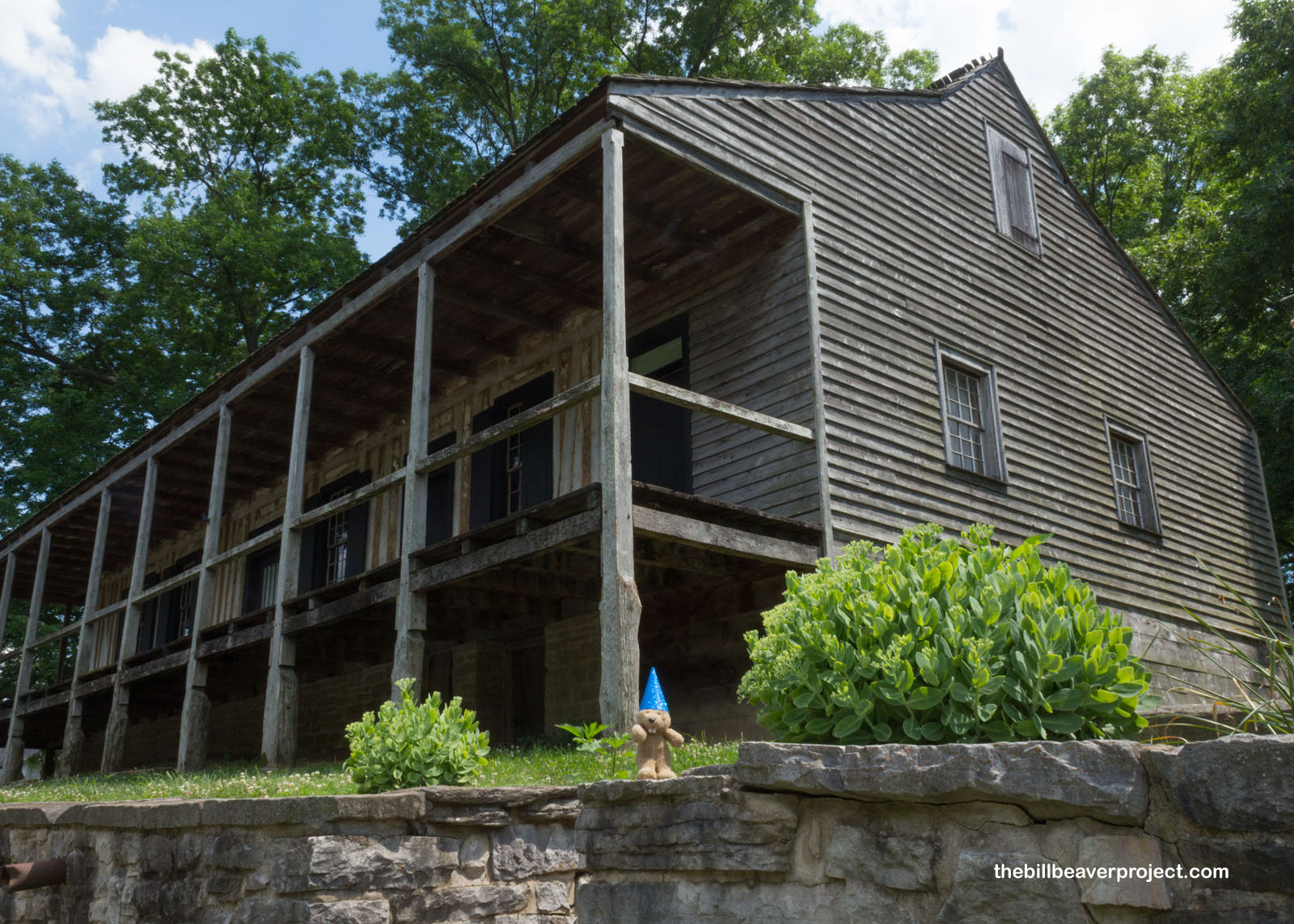 |
Then there was the Bauvais-Amoureux House, built in 1792 for the farm family of Bauvais, who ran their farm on slave labor. One of the enslaved woman, named Pélagie, fell in love with a French man named Benjamin, and together, they rowed across the Missouri River to Illinois to be married! This didn’t free Pélagie, the way marriage can give citizenship today, though. In fact, she was still enslaved for two years after they were married, and after she had their first son! The Bauvais family freed her in 1832, but she and her husband lived apart for the next 20 years anyway before buying this home in 1852. They lived out the rest of their lives here, so I guess that’s a happy ending for this Amoreaux couple!
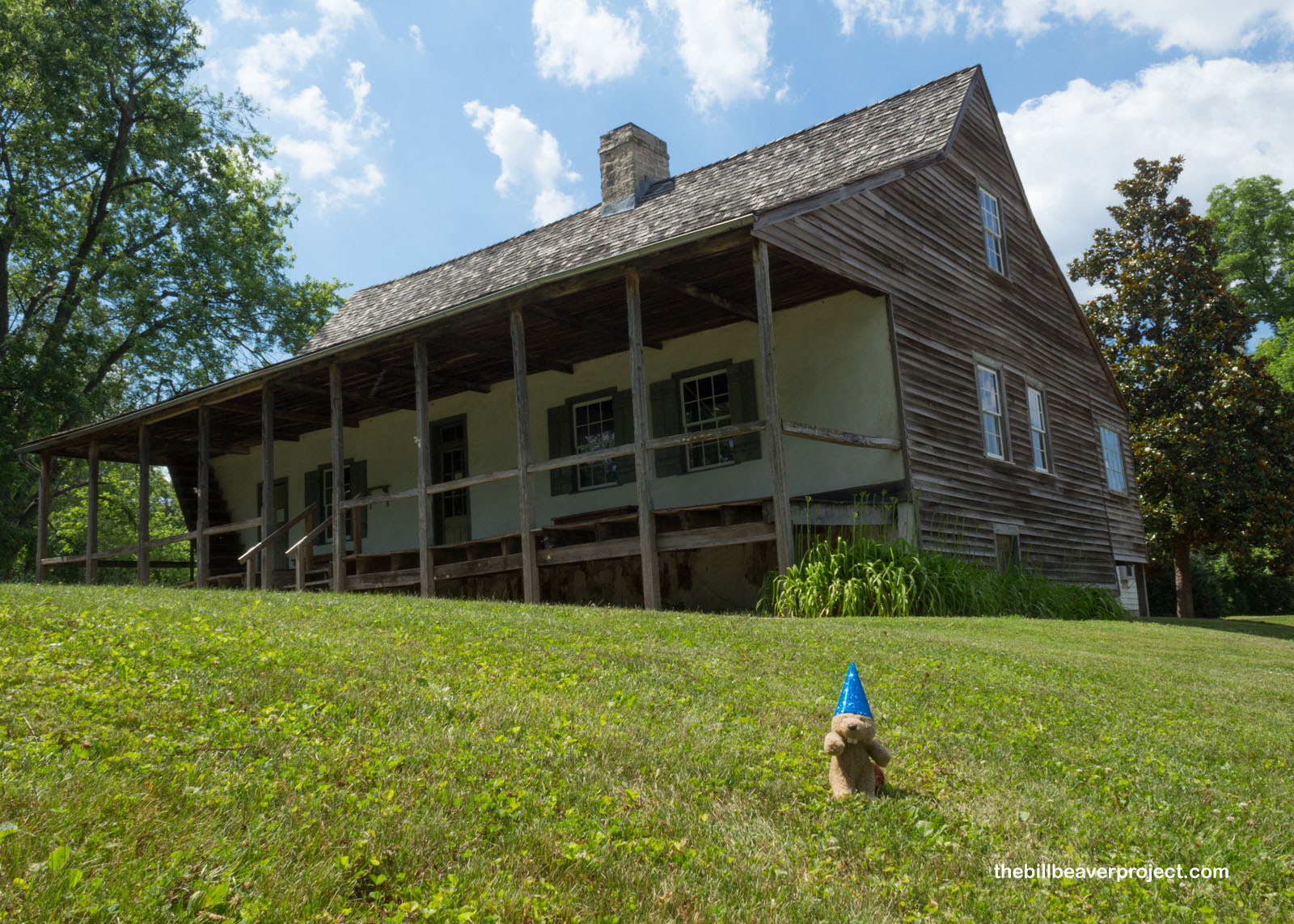 |
It was another happy ending for their neighbor, Clarisse, who had been enslaved by several generations of the Janis family. This house, originally built for Jean-Baptiste Bequette, Sr. in 1808, was sold at auction to freedman, Antoine Recole, in 1840, who then re-sold it to Clarisse, who’d finally been freed four years earlier. She lived out her days here with her children, carrying the last name Ribault. One of the many unanswered questions in Ste. Geneviève is why wealthy resident, Jean Ribault, included her in his will and why her children carried his last name. At least she got a house out of it!
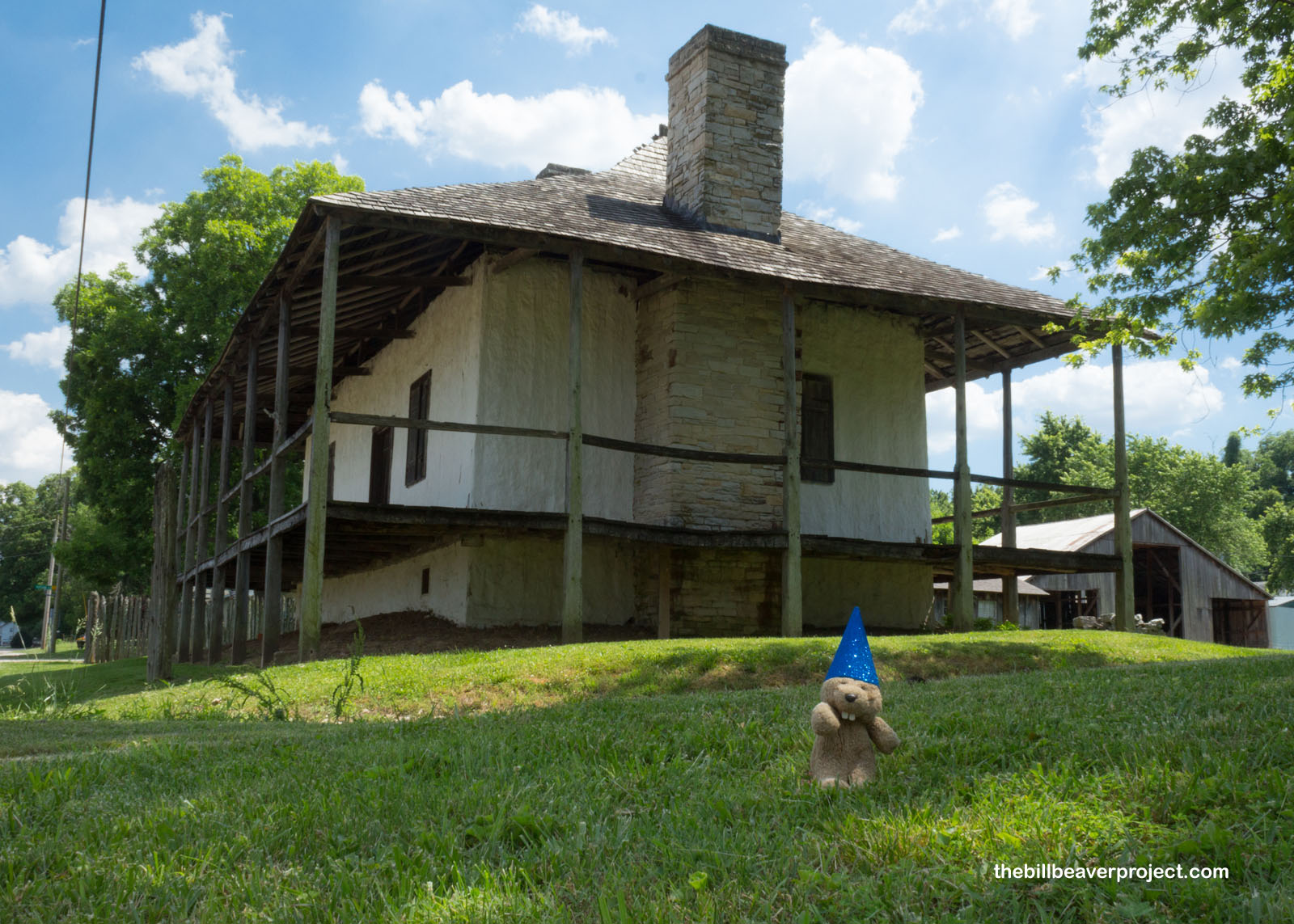 |
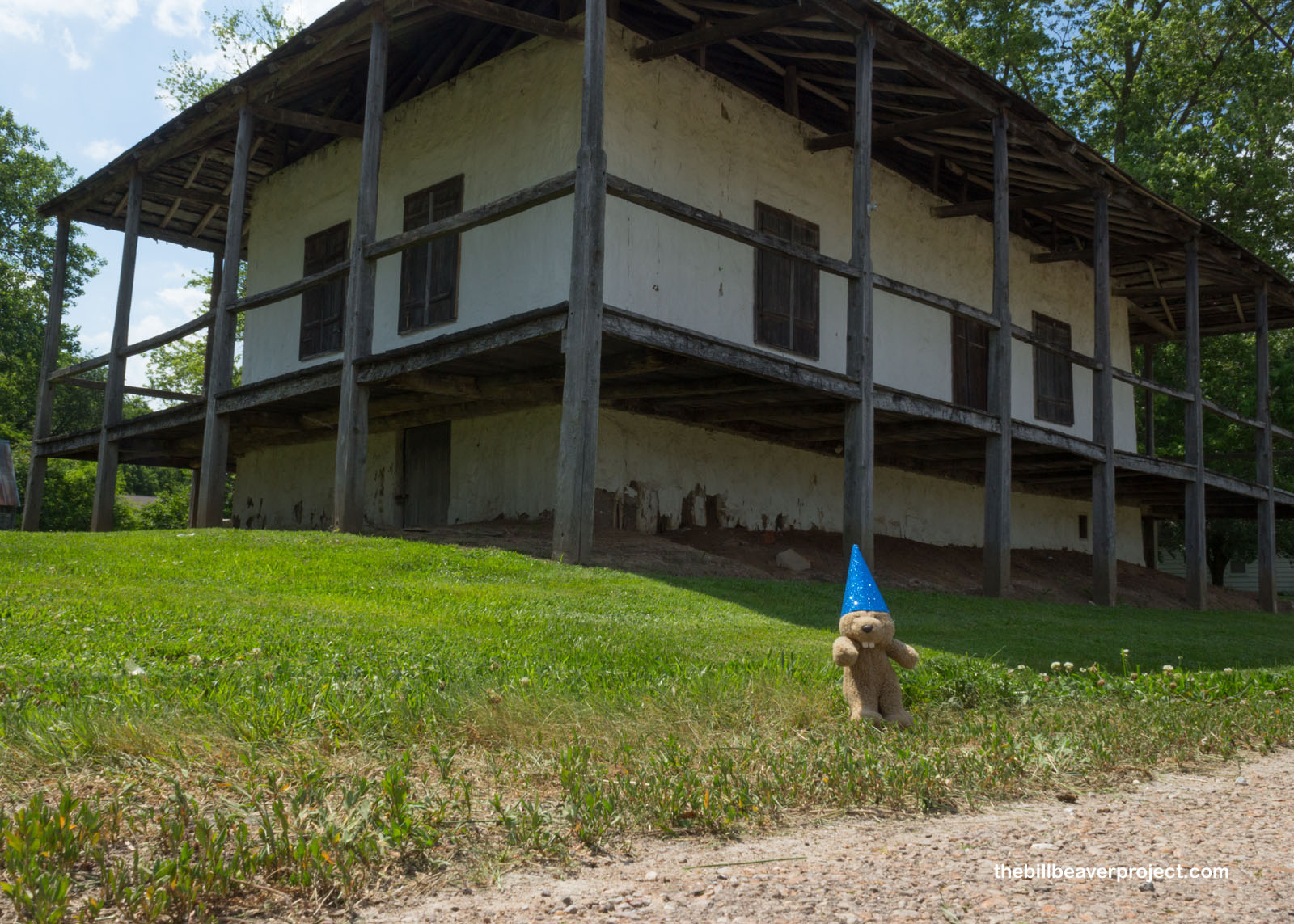 |
I left Ste. Geneviève behind and headed northeast, past St. Louis and off to central Missouri. I had two more destinations to explore on my birthday, not least of which was the capitol building in Jefferson City! Like many capitol buildings, several of this one’s predecessors burned down, so the legislature hedged their bets on the third. They levied a property tax that generated $1 million more than they needed to complete this design by Egerton Swartwout and Evarts Tracy! So what did they do next? They filled the inside with stained glass, murals, statues, and more art! It was too late in the day to tour this exquisite gallery, but I was plenty excited for my last stop of the day.
 |
That stop was Tipton, Missouri, founded in 1858 by William Tipton Seeley, who’d fought with the Virginia Volunteers in the War of 1812 and come out of it with a land grant that would eventually become this historically significant town!
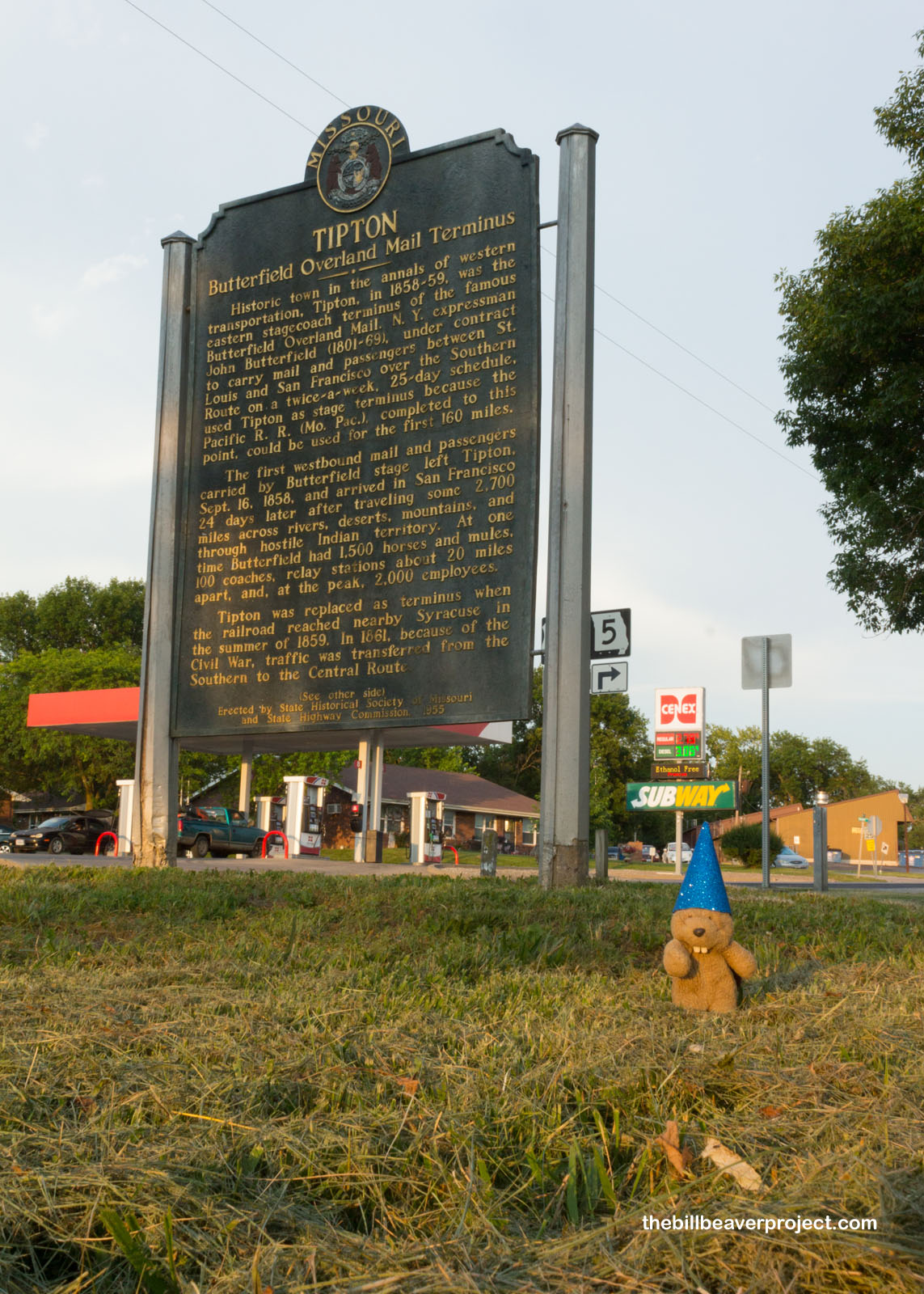 |
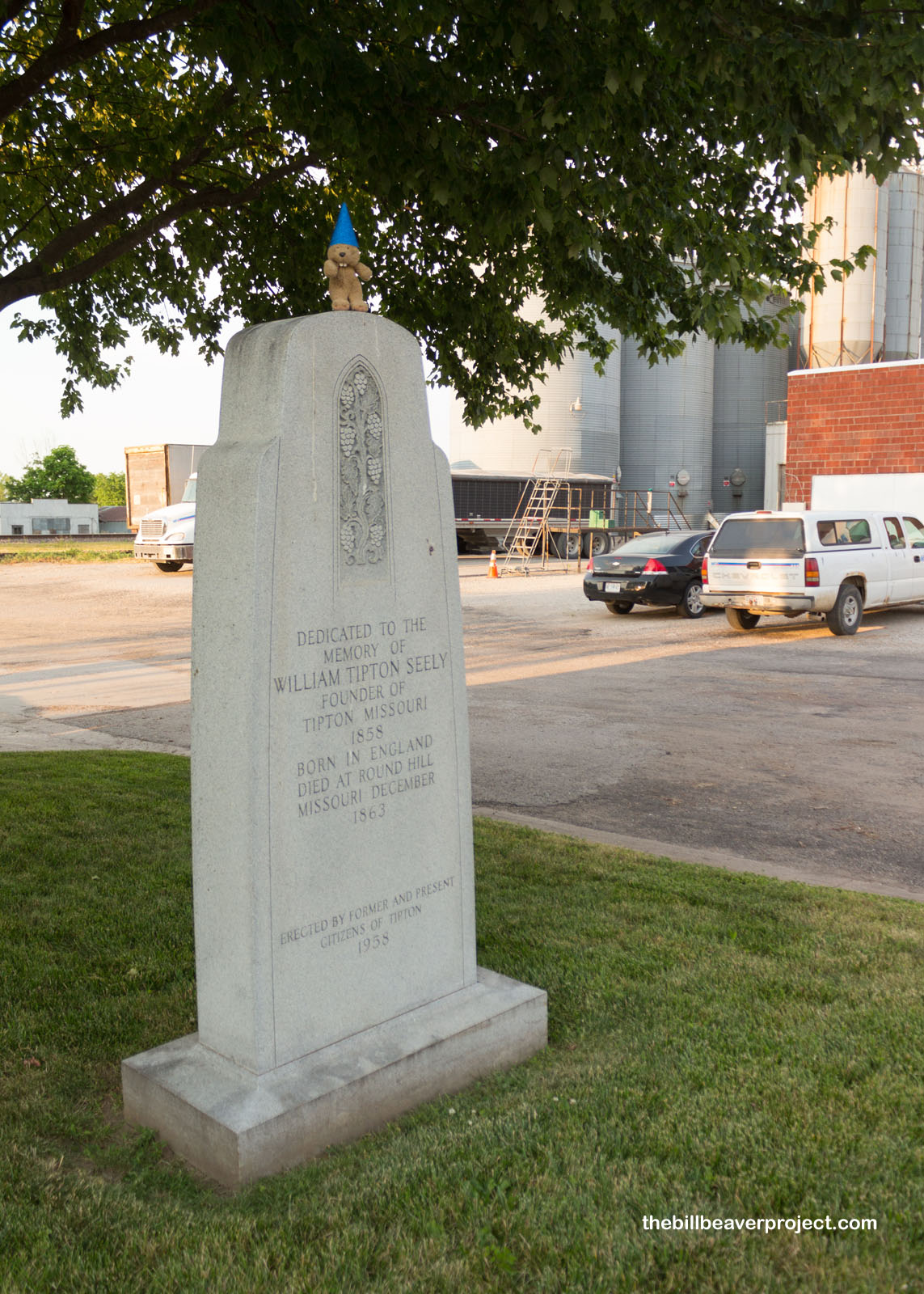 |
What makes Tipton so significant, you ask? Driving through, it’s not a flashy town by any means. It has a classic Main Street without much in the way of decoration, and today its biggest claim to fame is its water tower, painted like an 8-ball. So why would I press on to get here to Tipton before sunset on my birthday?
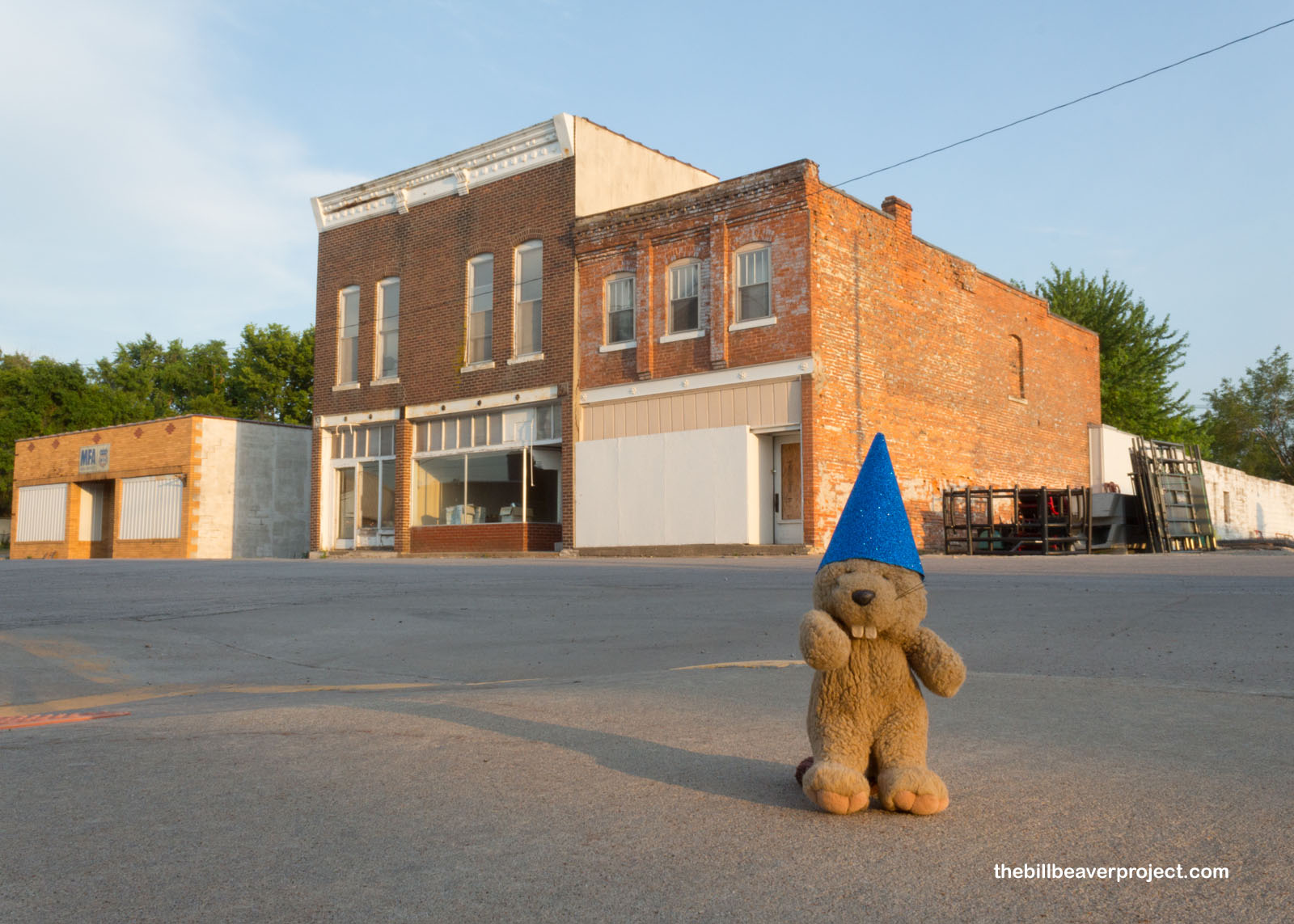 |
That’s right! Starting in 1858, Tipton was the birthplace of Butterfield Overland Mail! Here, the railroad connected to the frontier, and stage coaches loaded with mail from St. Louis would set off for San Francisco, a 2,795-mile journey in nine divisions spanning just under 25 days! Gosh, there are so many Butterfield landmarks in California with fond memories attached, from Mountain Home to Warner’s Ranch to Palm Spring! Even though the monument was small, it was a thrill to see where it all began!
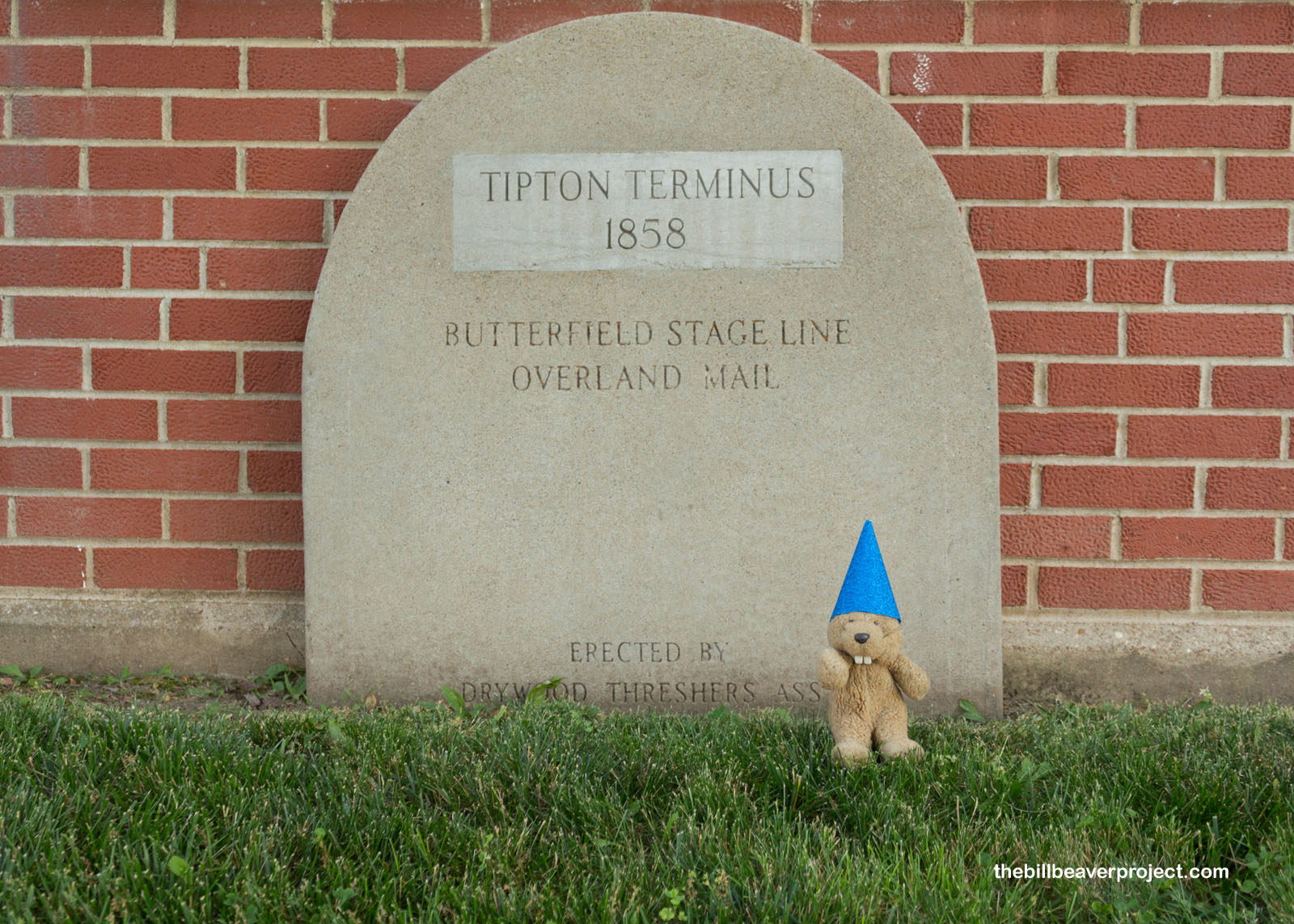 |
And just like that, a hot day of adventuring came to a close. Taking this route today was a great opportunity to spend my birthday checking off some big bucket-list parks, plus a capitol and a terminus to boot! I’m going to sleep well tonight, and tomorrow, I’ll be back in my regular hat and ready to explore the lives of scientists, soldiers, and scalawags!
There’ll be plenty MO to see tomorrow!

 More 2021 Adventures |
Total Ground Covered: 578.0 mi (930.2 km) *This includes yesterday’s 207-mile drive to Springfield, IL and back, which I didn’t blog about. |
 |
